Let me start writing the article.Coffered ceilings transform ordinary rooms into architectural masterpieces through their distinctive grid patterns of recessed panels. These three-dimensional ceiling designs, characterized by sunken squares, rectangles, or geometric shapes framed by beams, add instant elegance and visual depth to any space. Beyond their aesthetic appeal, coffered ceilings create the illusion of greater height, improve acoustics by absorbing sound, and can cleverly hide architectural flaws or structural elements. From traditional wooden designs to modern painted variations, these timeless ceiling treatments offer endless customization possibilities for dining rooms, living spaces, bedrooms, and home offices, making them a valuable investment that enhances both beauty and property value.
1. Traditional Wooden Coffered Ceiling with Rich Stained Beams
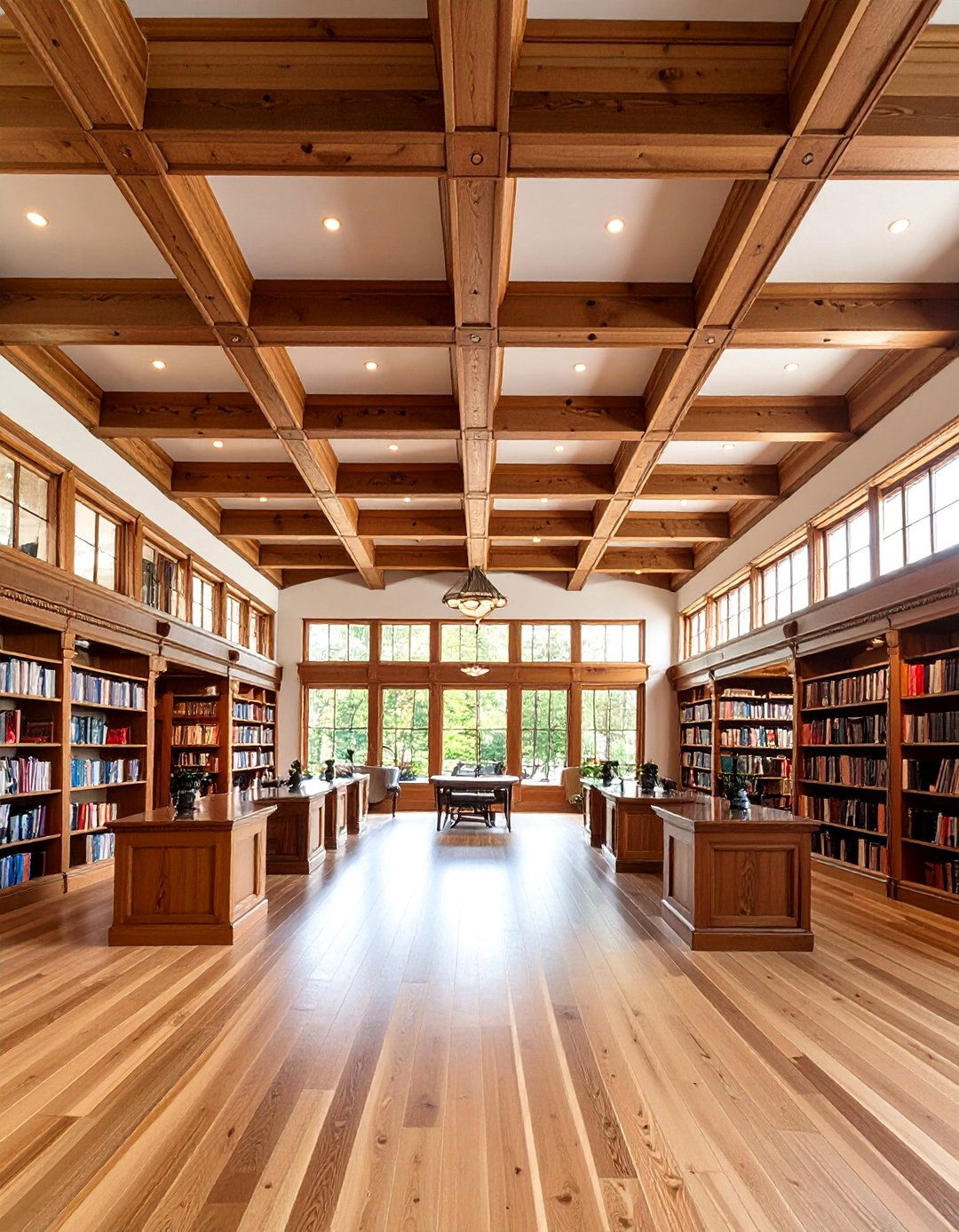
Classic and timeless, traditional wooden coffered ceilings are perfect for adding warmth and sophistication to libraries, corporate boardrooms, and upscale hotel lobbies. The rich texture and intricate detailing of stained wood beams create an inviting atmosphere that speaks to craftsmanship and heritage. These designs typically feature deep, honey-toned or mahogany-stained timber that forms bold rectangular grids across the ceiling surface. The natural wood grain patterns add organic beauty while the substantial beam width provides dramatic shadow lines that enhance the three-dimensional effect. This style works exceptionally well in traditional dining rooms, home libraries, and formal living spaces where elegance and gravitas are desired, creating an atmosphere reminiscent of grand estates and historic mansions.
2. Modern Minimalist White Coffered Ceiling Design
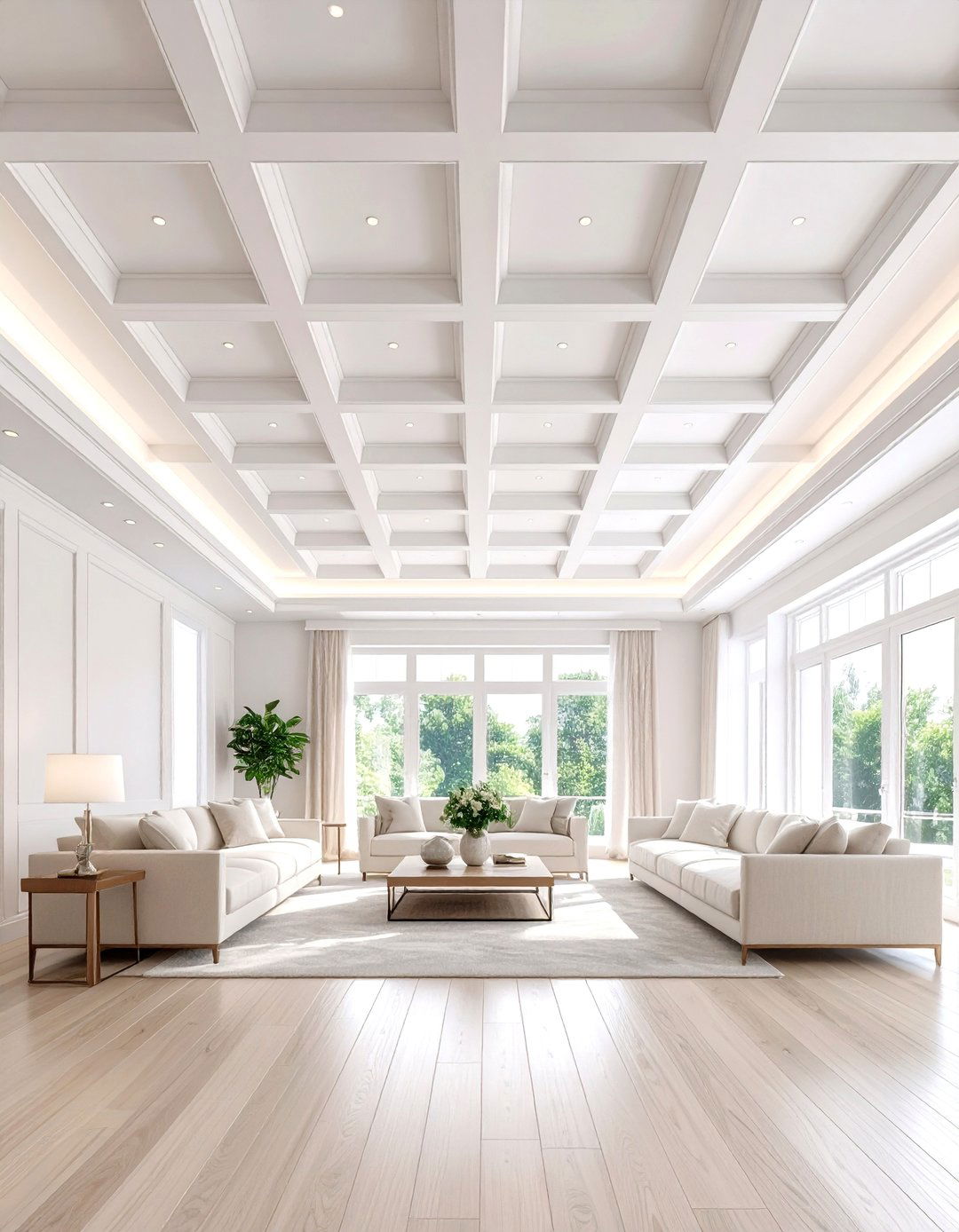
Contemporary homes embrace sleek white coffered ceilings that deliver architectural interest without overwhelming clean aesthetics. Flat white panels span the base of the ceiling, while simple white beams jut out over them, creating a minimalist yet visually interesting look that doesn't feel overly embellished. These designs eliminate traditional crown molding and ornate details in favor of crisp, geometric lines that complement modern furnishings and open floor plans. The monochromatic white palette reflects light beautifully, making rooms appear larger and brighter while maintaining the sophisticated depth that coffered designs provide. This approach works particularly well in contemporary kitchens, modern living rooms, and minimalist bedrooms where subtle architectural detail enhances rather than competes with streamlined décor and furnishing choices.
3. Painted Coffered Ceiling Panels with Bold Color Accents
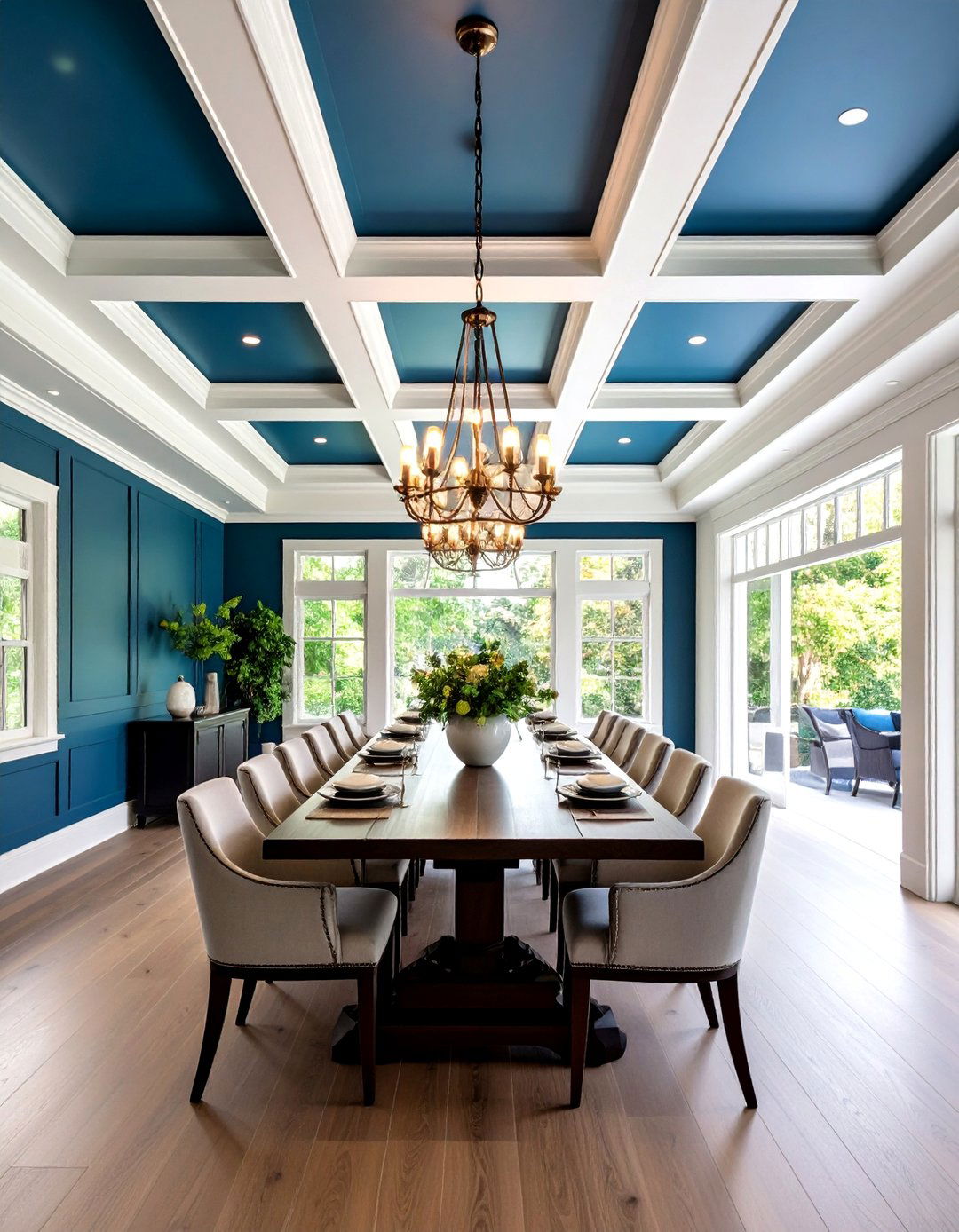
Transform your space with painted coffered ceiling panels that introduce vibrant personality and visual drama. For a more vibrant and personalized touch, consider painted panels for a coffered ceiling that allow you to match or contrast with the room's color scheme, enhancing the overall design. This creative approach enables homeowners to experiment with deep blues, rich greens, or dramatic blacks within the recessed panels while keeping the beam framework in contrasting colors. The painted surfaces can feature single bold hues or even incorporate multiple colors for artistic flair. This technique works especially well in dining rooms, home offices, or bedrooms where the ceiling becomes a statement piece that reflects personal style and complements the room's color palette without overwhelming the space.
4. Rustic Reclaimed Wood Coffered Ceiling Installation
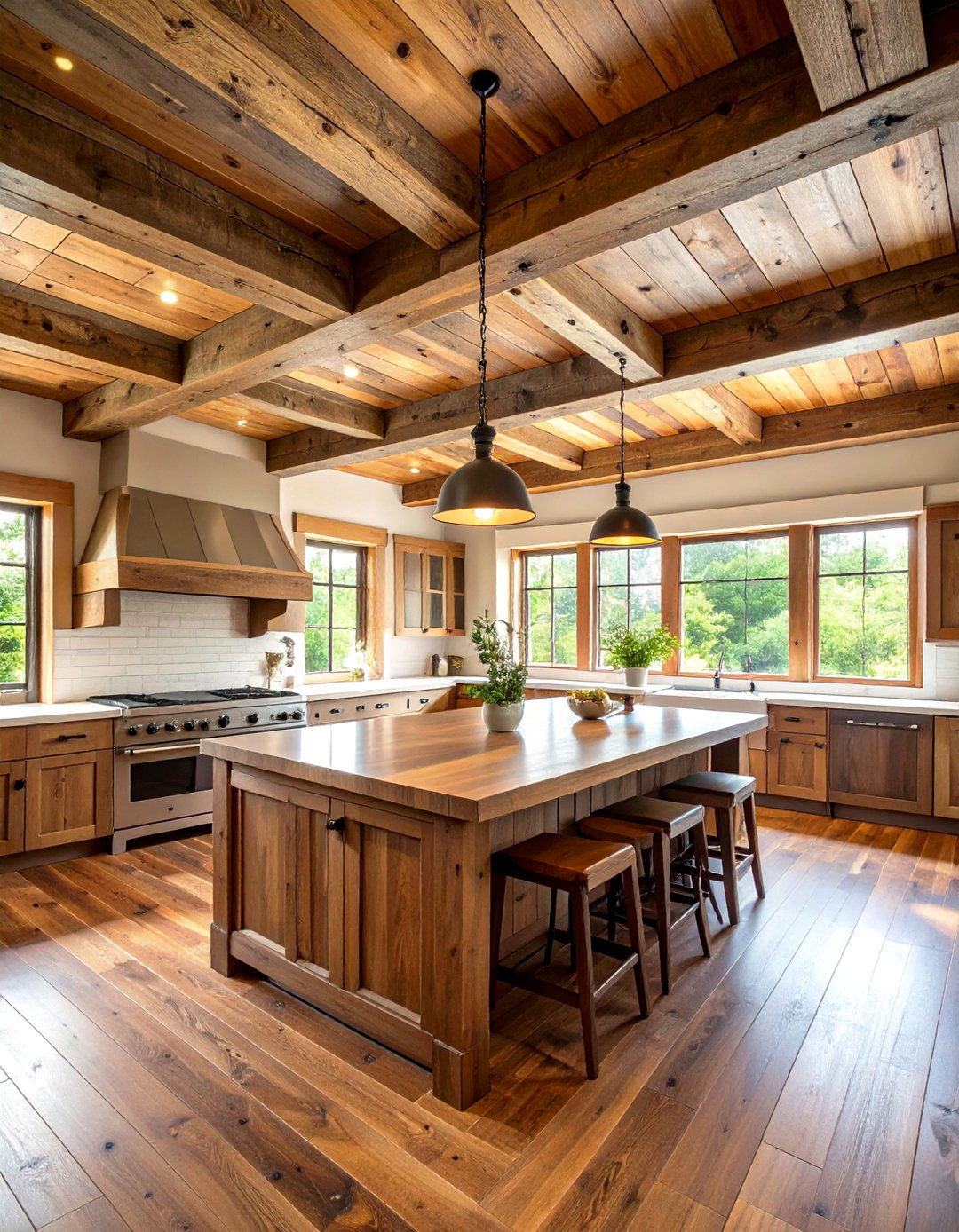
Incorporating distressed wood or reclaimed beams, rustic coffered ceilings bring a cozy, farmhouse charm to spaces like farm-to-table restaurants, rustic cafes, kitchens, and family rooms. The weathered textures and natural imperfections of salvaged timber tell stories of their previous lives, adding character and authenticity to modern homes. These designs celebrate the organic beauty found in aged wood with visible knots, nail holes, and patina that machine-made materials cannot replicate. The irregular surfaces create interesting shadow patterns while the sustainable aspect appeals to environmentally conscious homeowners. This style particularly shines in farmhouse kitchens, rustic living rooms, and cabin-style spaces where the connection to natural materials and traditional craftsmanship enhances the overall aesthetic and creates a warm, welcoming atmosphere.
5. DIY Beadboard Coffered Ceiling Project
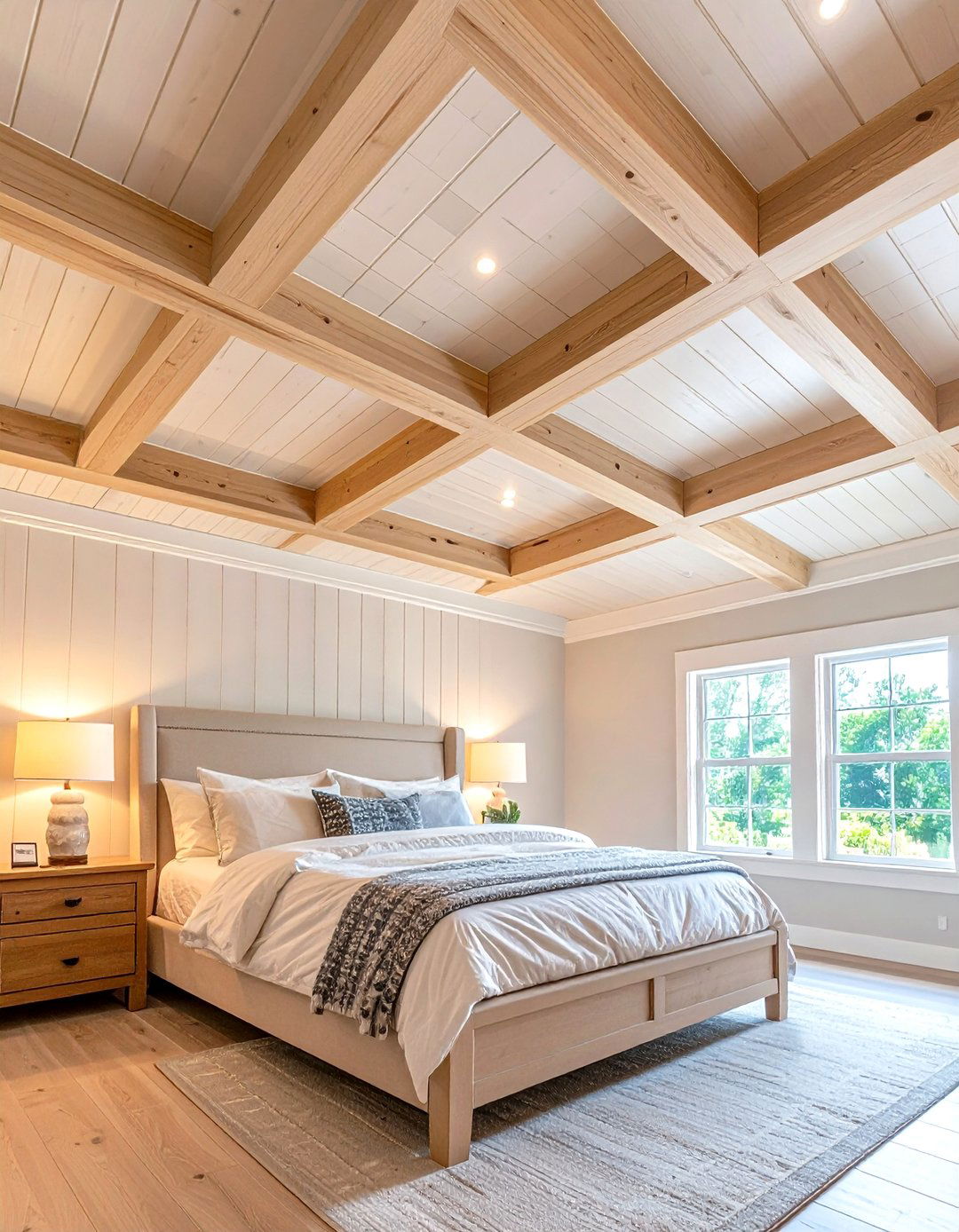
Creating an affordable yet stunning ceiling transformation, DIY beadboard coffered ceiling installations offer homeowners accessible elegance. This DIY ceiling makeover uses beadboard and moulding pieces to create a faux coffered ceiling, providing a simple way to add architectural interest to an otherwise drab ceiling. The project involves installing beadboard panels within a framework of dimensional lumber, creating the classic coffered grid pattern at a fraction of professional installation costs. The tongue-and-groove beadboard adds subtle vertical texture within each panel while the surrounding trim work defines the geometric structure. This approach works exceptionally well for covering damaged plaster, popcorn ceilings, or simply adding character to standard flat surfaces, making it an ideal weekend project for DIY enthusiasts.
6. Metallic Tin Coffered Ceiling with Industrial Appeal
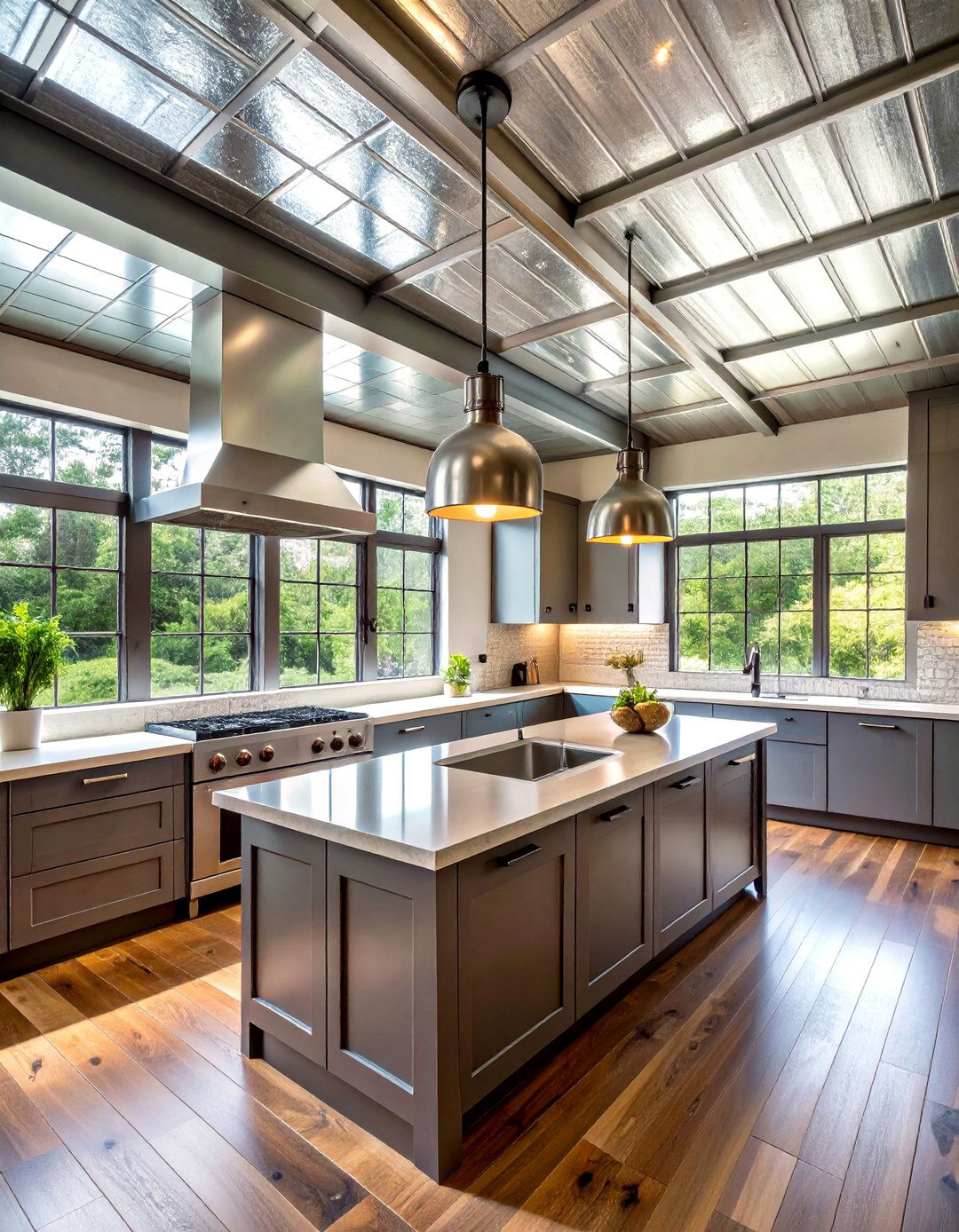
For a touch of glamour and modernity, metallic coffered ceilings using materials like tin or copper add shine and a contemporary edge, perfect for innovative corporate spaces and restaurant dining rooms. These designs reflect light beautifully while introducing industrial sophistication to residential and commercial spaces. The metallic surfaces can feature brushed, polished, or aged finishes that complement modern fixtures and furnishings. Tin ceiling tiles arranged in coffered patterns combine historical charm with contemporary application, while copper elements develop natural patina over time for evolving beauty. This style particularly excels in modern kitchens, industrial lofts, and contemporary dining rooms where the interplay of metal and light creates dynamic visual interest and sophisticated ambiance that bridges vintage appeal with cutting-edge design sensibilities.
7. Geometric Octagonal Coffered Ceiling Pattern
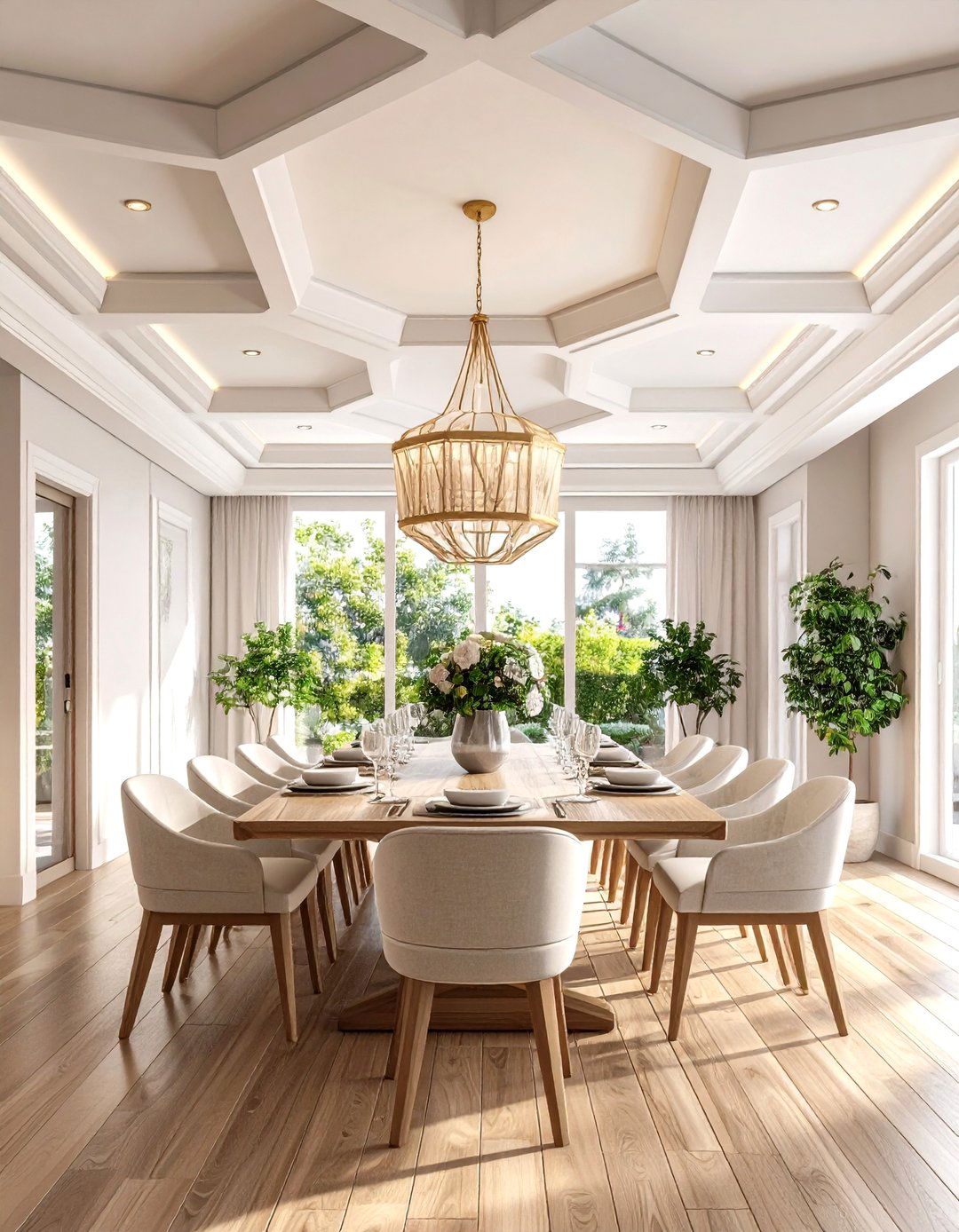
Breaking away from traditional rectangular grids, geometric octagonal coffered ceiling patterns introduce unique visual rhythm and mathematical precision. These three-dimensional designs come in octagonal grids, while geometric coffered ceilings incorporate shapes like hexagons and triangles for innovative looks. The eight-sided panels create more dynamic shadow patterns than standard squares, adding sophisticated complexity to ceiling design. This approach works particularly well in entryways, formal dining rooms, or spaces where distinctive architectural character is desired. The octagonal shapes can be arranged in repeating patterns or combined with square panels for varied visual texture. Installation typically involves specialized intersection fittings that create clean connections between angled surfaces, resulting in a ceiling treatment that serves as both functional architecture and artistic statement piece.
8. Coffered Ceiling Design with Integrated LED Lighting
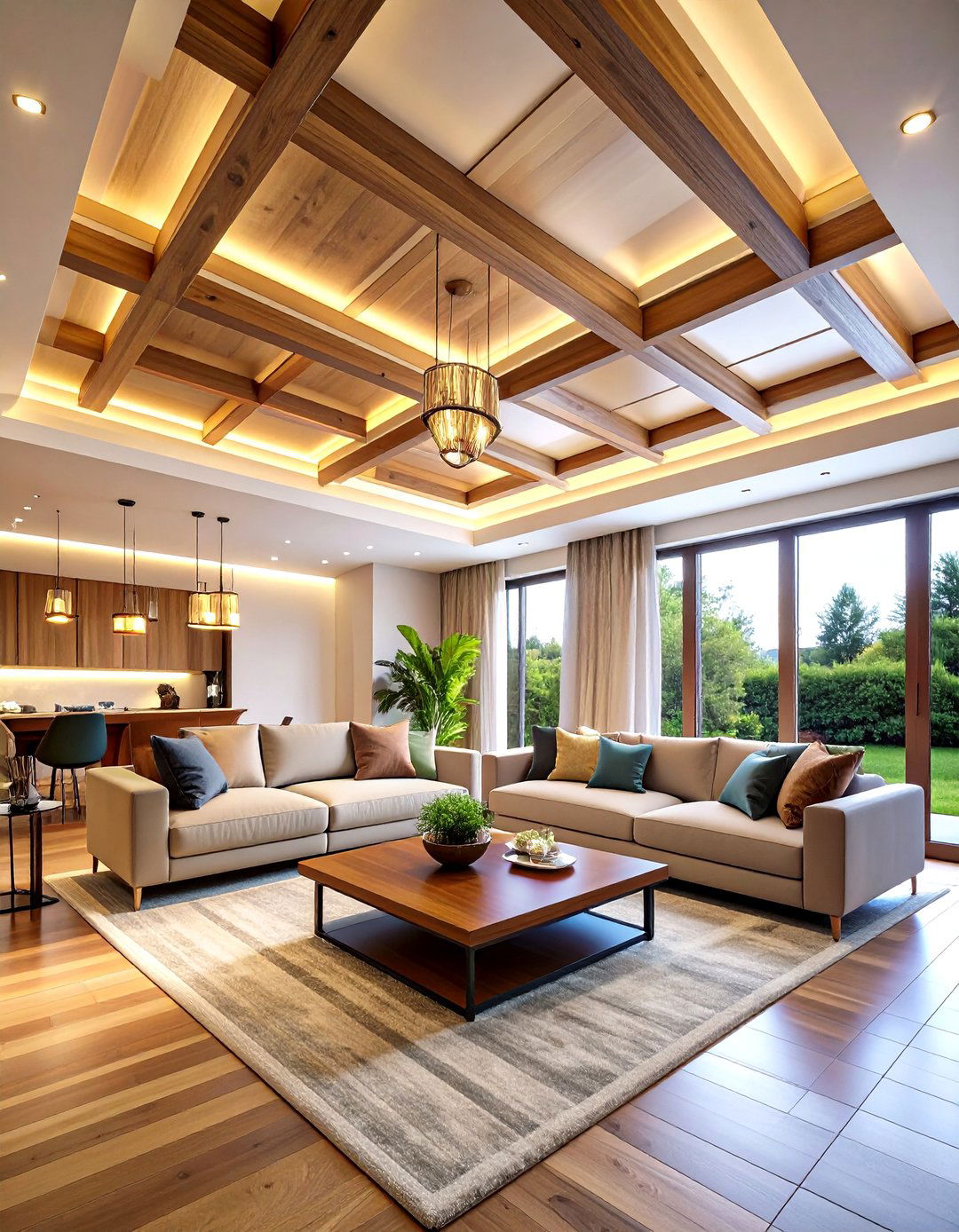
Enhance your coffered ceiling's dramatic impact through strategic integration of LED lighting systems within the architectural framework. Integrate lighting within the coffered ceiling design to highlight the architectural details and create a well-lit, inviting atmosphere. Recessed lights can be installed within individual panels for even illumination, while LED strips placed along beam edges create stunning accent lighting that emphasizes the geometric patterns. Smart lighting systems allow for customizable color temperatures and dimming options that adapt to different activities and moods throughout the day. This approach transforms the ceiling from a static architectural element into a dynamic feature that provides both ambient and task lighting. The combination works exceptionally well in modern dining rooms, contemporary living spaces, and home theaters where lighting control enhances both functionality and aesthetic appeal.
9. Two-Tone Contrasting Coffered Ceiling Finish
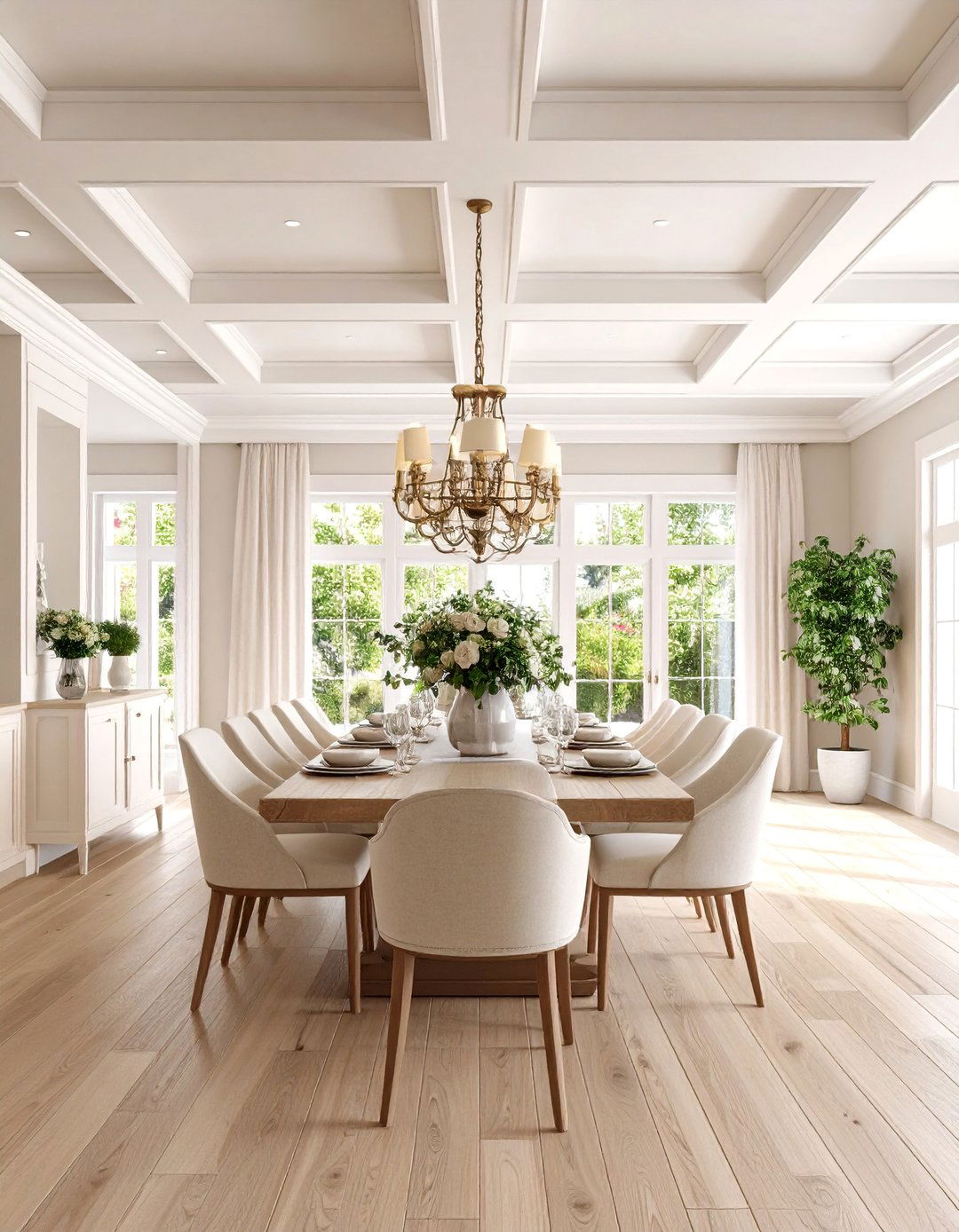
Create visual depth and sophisticated contrast through two-tone coffered ceiling designs that play with complementary colors and finishes. For more depth, you can contrast tones rather than stick with one hue, where beams are painted a milkier off-white to match wall ornamentation, while the ceiling base is kept in cool-toned ivory. This technique allows the architectural structure to stand out distinctly from the recessed panels, emphasizing the three-dimensional geometry. Popular combinations include white beams with soft gray panels, cream framework with sage green inserts, or natural wood beams against painted white backgrounds. The contrasting tones help define the coffered grid while adding subtle color interest that complements the room's overall palette. This approach works particularly well in transitional spaces where traditional and contemporary elements blend harmoniously.
10. Shallow Flat Coffered Ceiling for Low Ceilings
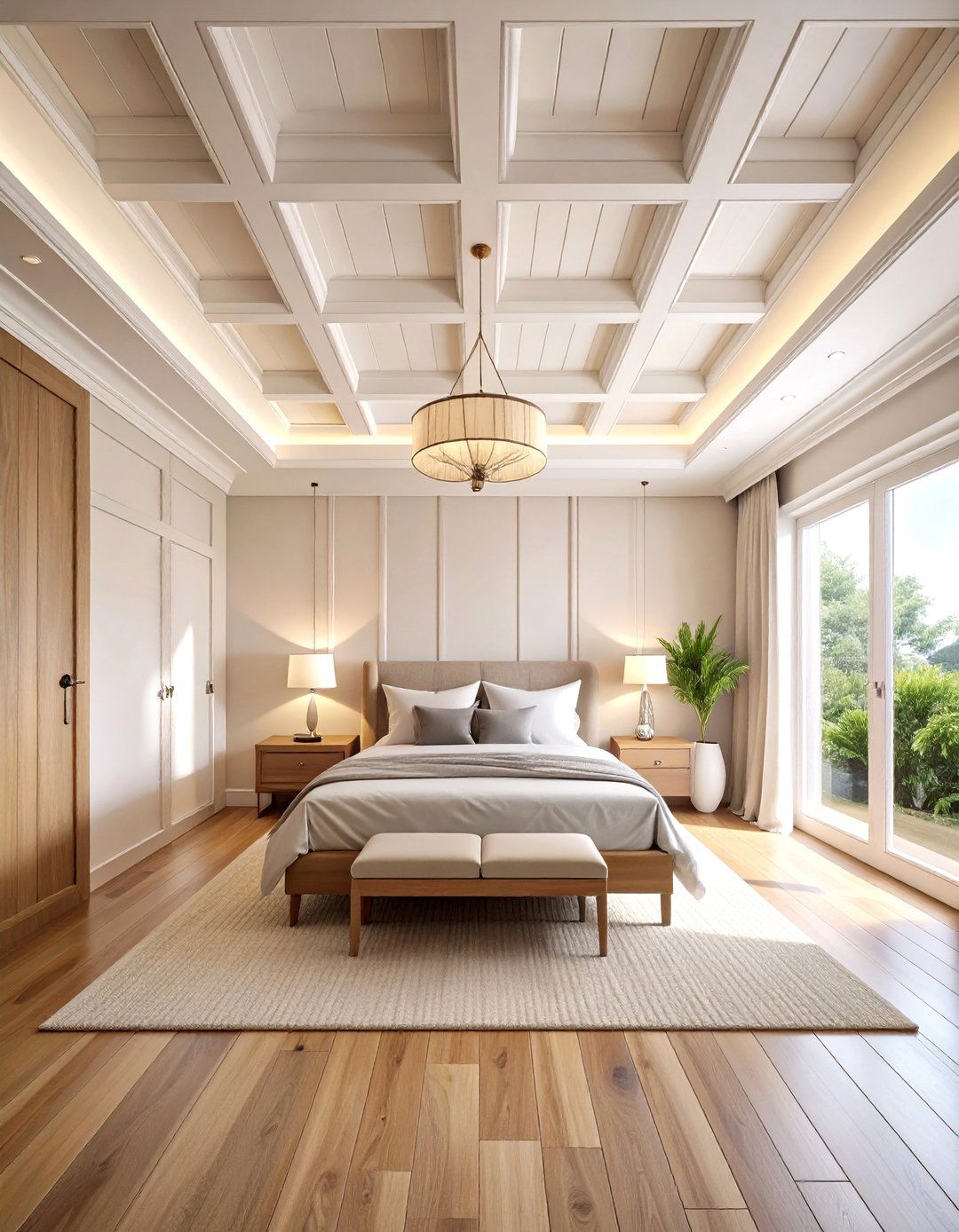
Maximize architectural impact in rooms with standard height limitations through shallow flat coffered ceiling designs that add dimension without overwhelming space. With intricate grades on the border, shallow coffered ceilings with simple millwork bring classical character while utilizing similar crossbeams with minimal depth. These designs feature reduced projection depths that create subtle shadow lines and visual interest without significantly lowering the ceiling height. The shallow approach maintains the geometric beauty of traditional coffered designs while remaining proportionally appropriate for 8-foot ceilings. Installation typically involves thinner beams and minimal crown molding to achieve the classic look without spatial compromise. This solution works excellently in bedrooms, smaller dining rooms, and spaces where architectural detail is desired but ceiling clearance must be preserved for comfortable living.
11. Victorian Ornate Coffered Ceiling with Decorative Molding
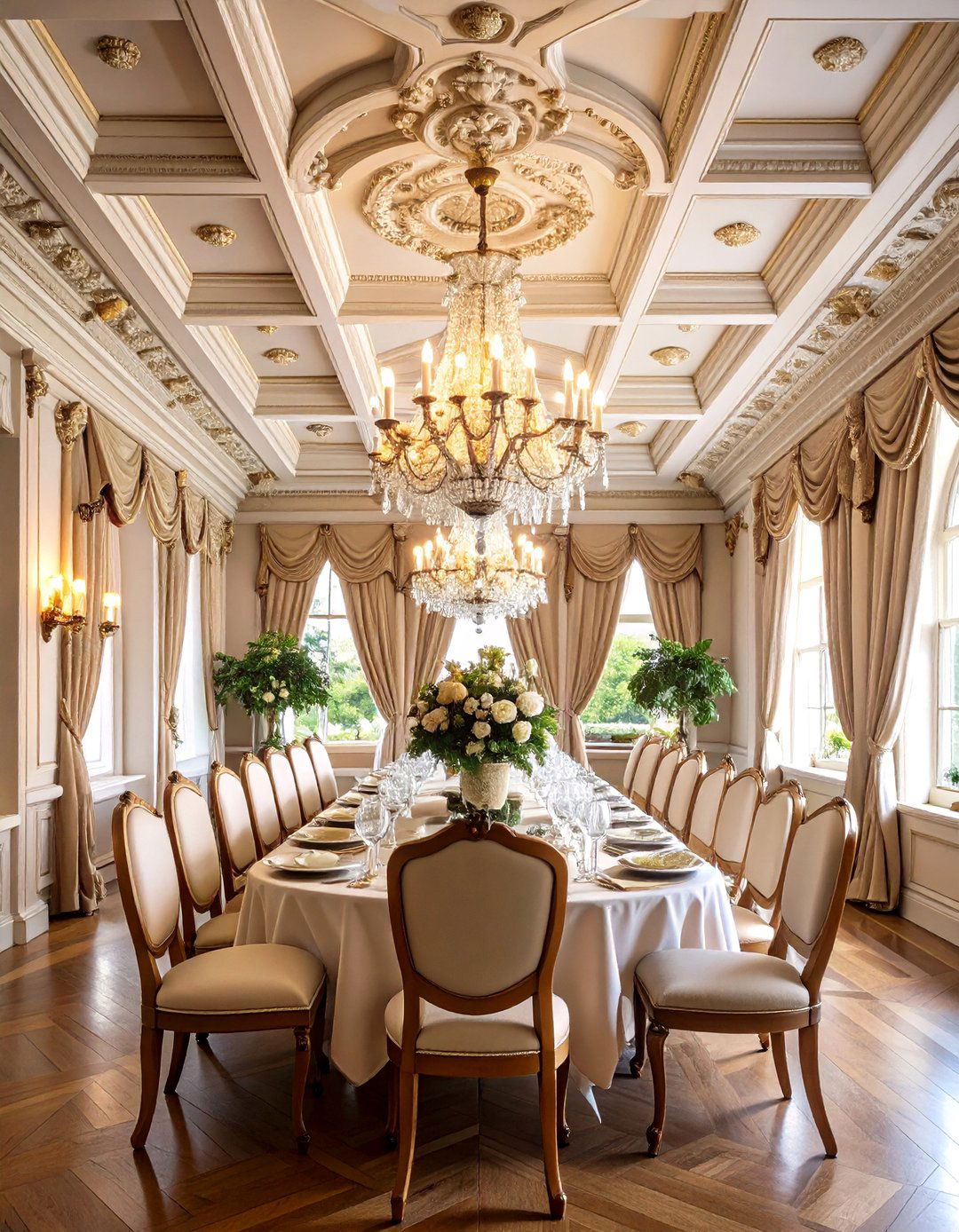
Rich in detail and ornamentation, Victorian-inspired coffered ceilings feature elaborate moldings and intricate patterns, making them perfect for historic buildings, upscale dining venues, and opulent interiors. These elaborate designs incorporate multiple layers of decorative trim, carved rosettes, and complex crown molding profiles that create visual richness and historical authenticity. The ornate elements often include egg-and-dart patterns, acanthus leaves, and other classical motifs that reflect the grandeur of the Victorian era. Multiple levels of trim work build up the three-dimensional effect while intricate corner details and center medallions add focal points within the grid structure. This style works particularly well in restored historic homes, formal dining rooms, and spaces where period authenticity and luxurious detailing are primary design goals, creating atmosphere reminiscent of grand Victorian mansions.
12. Contemporary Steel Frame Coffered Ceiling System

Modern architecture embraces sleek steel frame coffered ceiling systems that deliver industrial elegance and structural clarity. Steel framing and clean lines ground the space with contemporary appeal while maintaining coffered depth and visual interest. These designs feature exposed metal framework, often in black or brushed steel finishes, that creates bold geometric patterns against painted or natural ceiling surfaces. The steel elements can incorporate both structural and decorative functions, supporting lighting systems, HVAC integration, or architectural spanning requirements. This approach works exceptionally well in modern lofts, contemporary offices, and industrial-style residential spaces where the honest expression of materials and clean geometric forms align with minimalist design principles. The metal framework provides durability while creating sophisticated contrast against softer interior elements.
13. Textured Fabric Panel Coffered Ceiling Insert
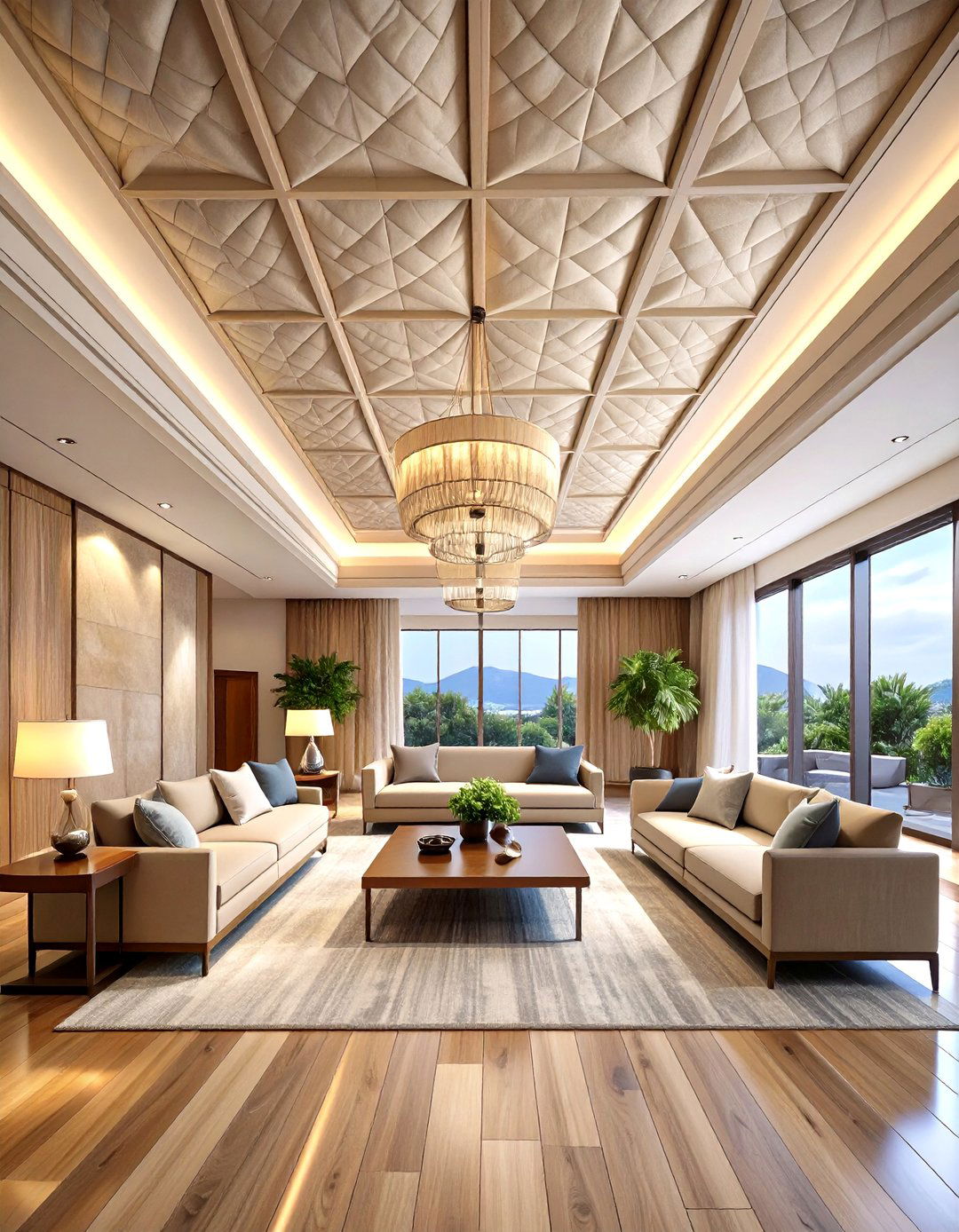
Incorporating materials such as fabric or textured panels into coffered ceiling styles adds depth and tactile interest, particularly effective in creating cozy, intimate spaces in wellness centers, boutique hotels, and luxury retail stores. These innovative designs replace traditional painted or wooden panels with upholstered inserts, woven materials, or specialized acoustic fabrics that introduce softness and sound absorption. The textured surfaces can feature everything from linen and burlap to specialized acoustic materials designed for optimal sound control. This approach works particularly well in bedrooms, home theaters, and music rooms where acoustic performance is important alongside aesthetic appeal. The fabric elements can be easily updated or changed to refresh the room's appearance while maintaining the architectural framework, offering flexibility that traditional materials cannot provide.
14. Mirrored Coffered Ceiling Panels for Light Enhancement
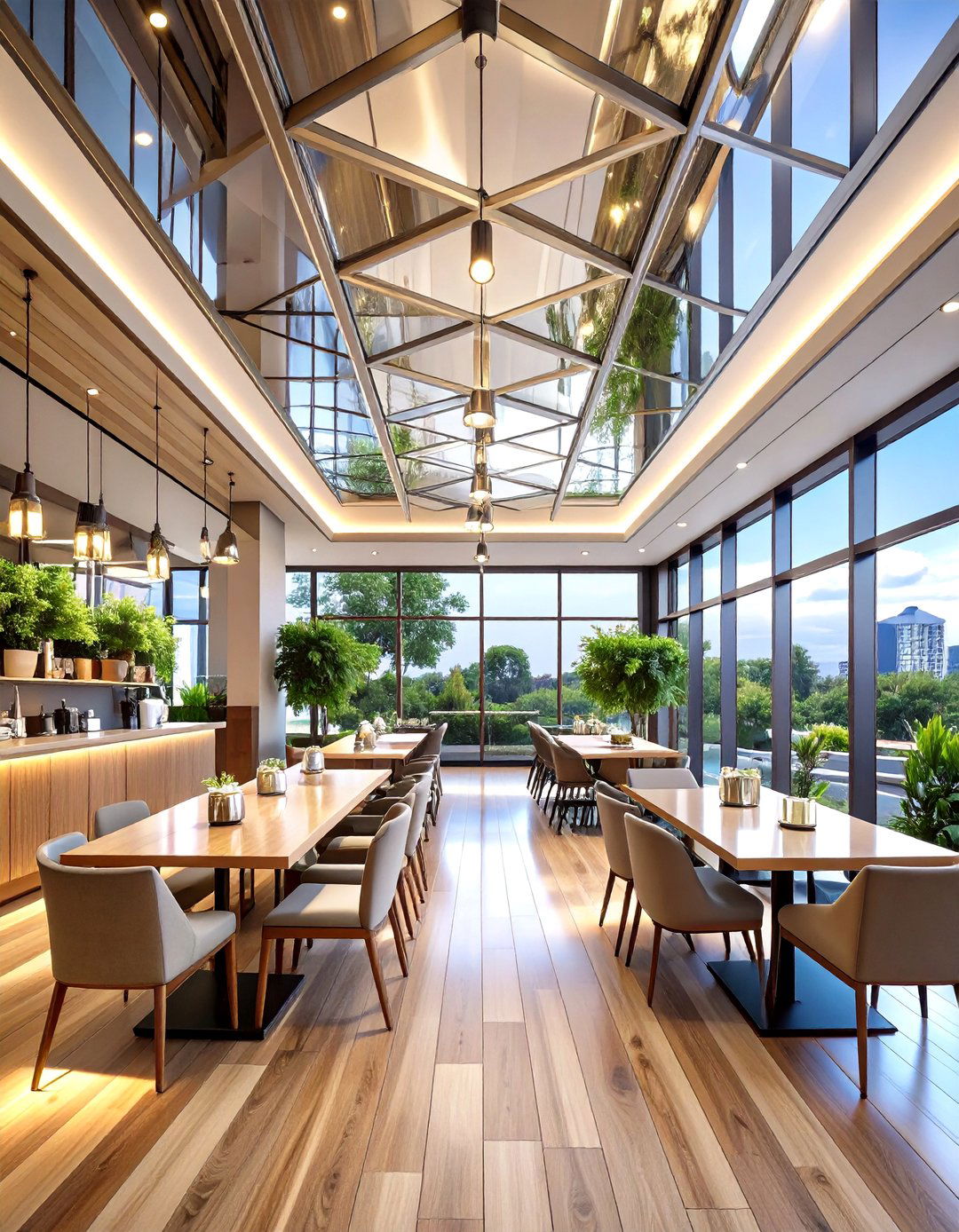
Mirrored panels within the coffered ceiling design reflect light, making rooms appear larger and brighter, working particularly well in smaller spaces like trendy cafes and boutique hotels. These innovative designs incorporate reflective surfaces within the recessed panels, creating dramatic light multiplication and spatial expansion effects. The mirrored elements can be traditional glass mirrors, polished metal surfaces, or specialized architectural mirror tiles that withstand ceiling installation requirements. This technique works exceptionally well in powder rooms, small dining areas, and spaces where natural light is limited but maximum brightness is desired. The reflective surfaces interact beautifully with both natural and artificial lighting, creating dynamic patterns throughout the day while making modest-sized rooms feel significantly more spacious and luminous.
15. Wallpapered Coffered Ceiling Panel Inserts

Introduce pattern and personality through wallpapered coffered ceiling panel inserts that transform recessed areas into decorative focal points. Adding wallpaper within the coffered panels introduces patterns and textures, enhancing the ceiling's visual interest as an excellent way to experiment with bold designs without overwhelming the room. This creative approach allows homeowners to incorporate florals, geometrics, or artistic prints within the structured framework of the coffered grid. The wallpaper can complement or contrast with wall treatments while remaining contained within the architectural boundaries of each panel. Popular choices include subtle textures, botanical prints, or geometric patterns that add visual interest without becoming overwhelming. This technique works particularly well in bedrooms, dining rooms, and powder rooms where decorative elements can be more adventurous while the beam framework provides visual organization and sophistication.
16. Coffered Ceiling Design with Crown Molding Details

Elevate coffered ceiling sophistication through the addition of traditional crown molding details that enhance the architectural framework and visual refinement. The coffered ceiling is finished with crown molding and textured beams to complement traditional-style spaces. These decorative trim elements add layers of visual interest while creating smooth transitions between the ceiling beams and recessed panels. Crown molding profiles can range from simple cove designs to elaborate multi-piece combinations that reflect classical architectural traditions. The molding elements help define the three-dimensional structure while adding proportional refinement that elevates the overall design. This approach works particularly well in formal dining rooms, traditional living spaces, and areas where classical detailing enhances the room's elegance and historical character, creating sophisticated transitions that professional designers favor.
17. Triangular Diamond Pattern Coffered Ceiling Grid
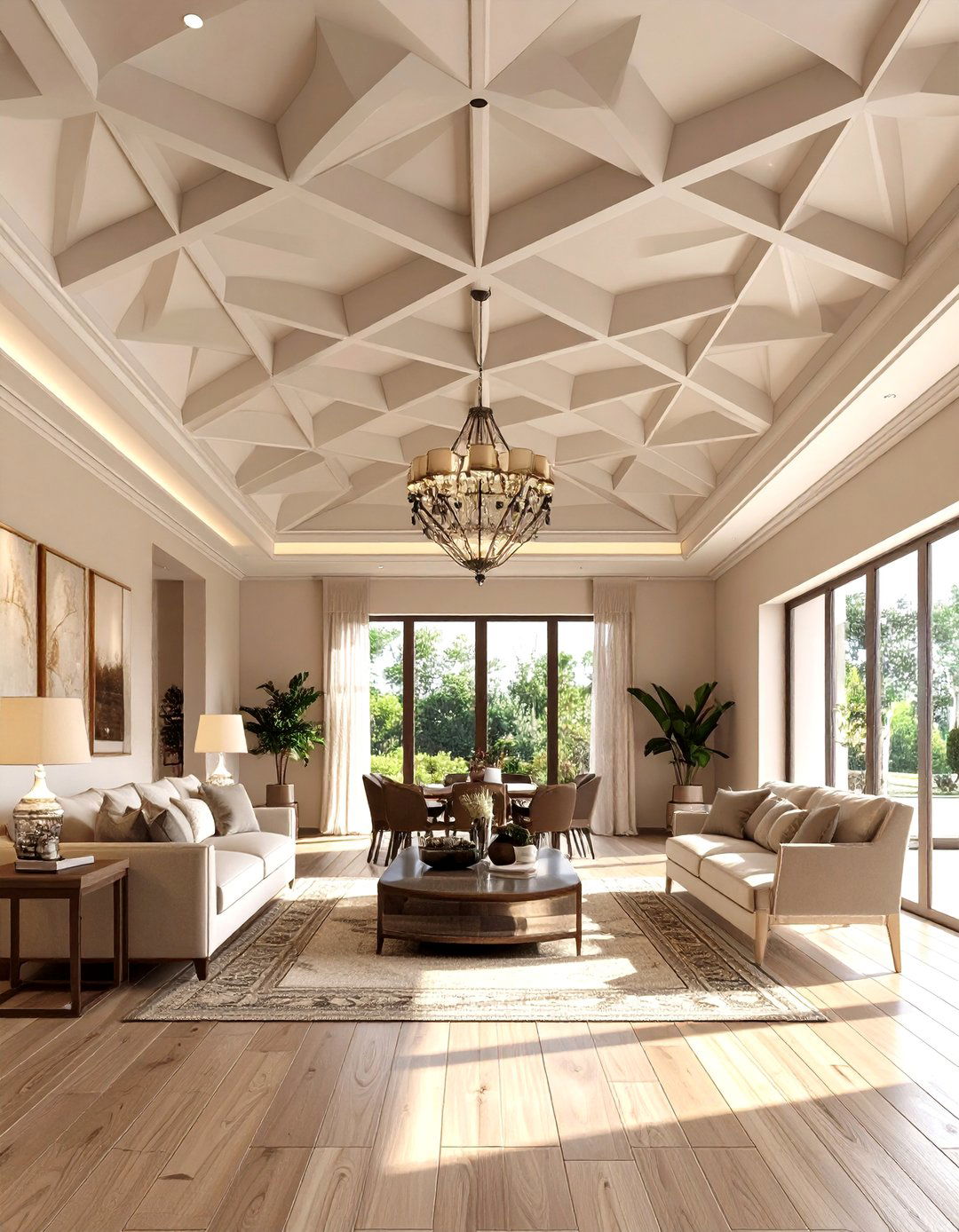
Diamond and pentagon shapes make unique first impressions in entryways, while triangular patterns create more movement than straight-set grids, helping traditional rooms feel less stuffy. These geometric variations break away from standard rectangular patterns to create dynamic visual rhythm and mathematical precision. The angular shapes generate more complex shadow patterns throughout the day as natural light moves across the ceiling surface. Installation requires careful planning and specialized intersection details to achieve clean connections between angled elements. This approach works particularly well in contemporary spaces, artistic environments, and areas where distinctive architectural character is desired. The triangular geometry can be arranged in various configurations, from simple alternating patterns to complex tessellations that create sophisticated mathematical beauty while maintaining the functional benefits of traditional coffered design.
18. Open-Concept Coffered Ceiling Space Separator

Coffered ceilings can be a great way to visually subdivide an open concept space, commonly used to design kitchen, dining, and living room functions into one large area while providing acoustical dampening. These strategic installations define different functional zones without requiring physical walls that would interrupt sight lines or natural light flow. The coffered treatment can vary between areas—perhaps deeper beams over the dining space and shallower details over the living area—to create subtle differentiation. This approach maintains the open feeling while providing visual organization and improved acoustics through the three-dimensional ceiling structure. The design works particularly well in contemporary homes where flexible space usage and flowing layouts are priorities while architectural definition adds sophistication and functional sound control to large areas.
19. Sustainable Eco-Friendly Coffered Ceiling Materials
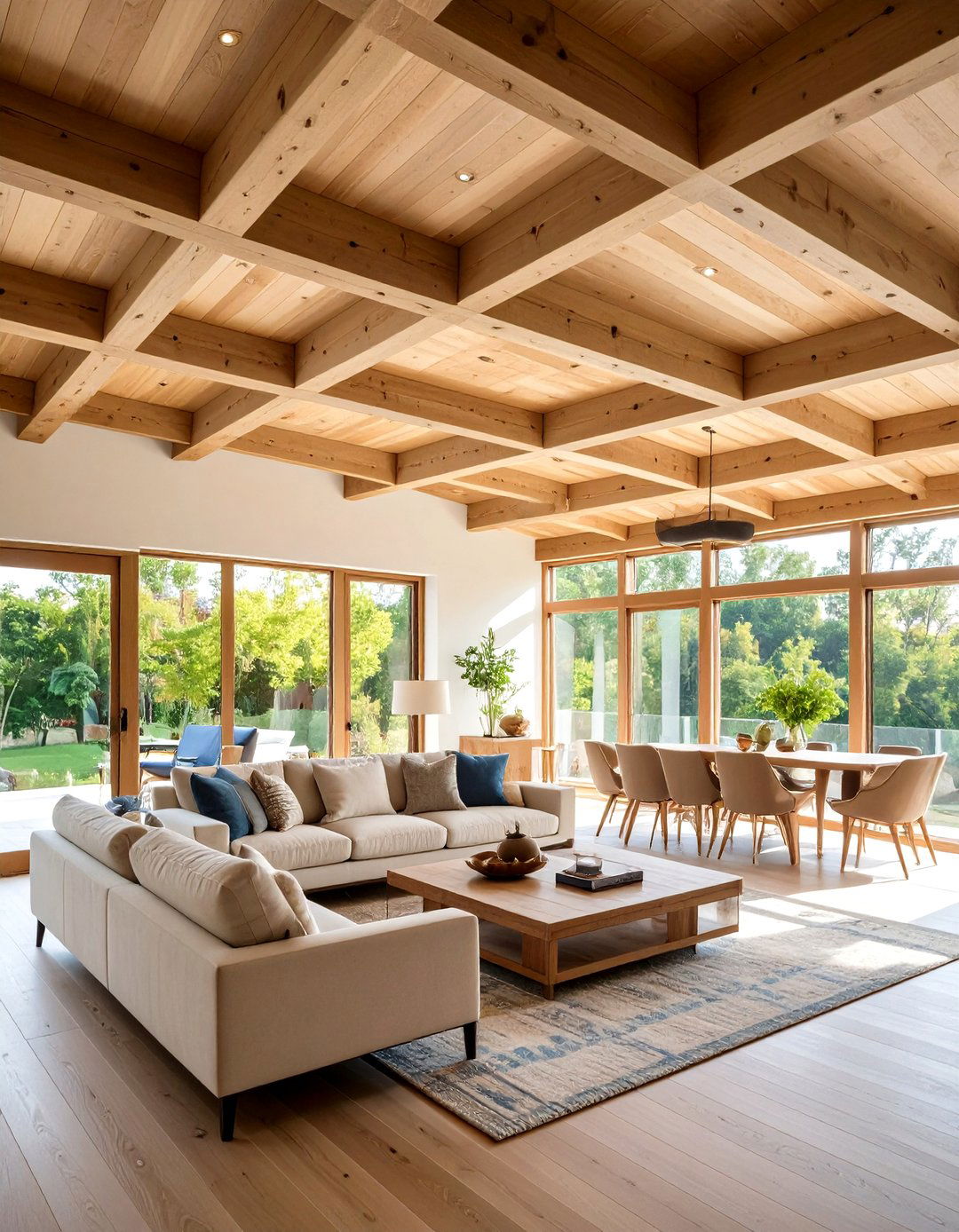
Integrate greenery or eco-friendly materials into your coffered ceiling design for a refreshing and sustainable approach that enhances aesthetics while bringing a touch of nature indoors. These environmentally conscious designs incorporate reclaimed wood, bamboo, recycled metal, or other sustainable materials that reduce environmental impact while creating beautiful architectural features. FSC-certified lumber, salvaged timber, and rapidly renewable materials like bamboo offer responsible alternatives to traditional materials without sacrificing aesthetic appeal. Some designs even incorporate living elements like air plants or green walls within the coffered framework. This approach appeals to environmentally conscious homeowners while creating unique character through the natural variations and textures found in sustainable materials. The eco-friendly focus aligns with contemporary values while providing distinctive visual interest and connection to natural elements.
20. Professional Installation Coffered Ceiling System
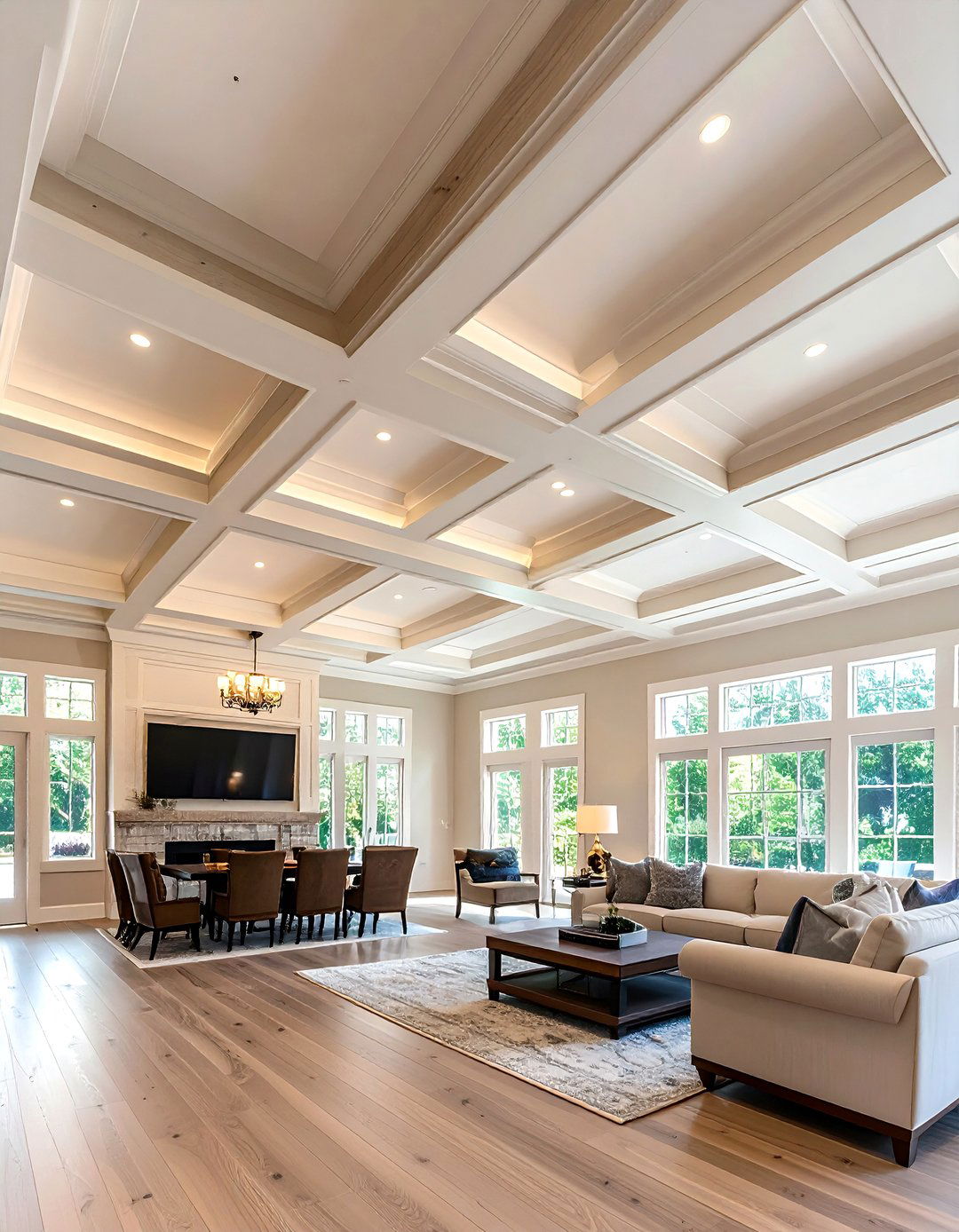
For flawless results and complex designs, professional installation coffered ceiling systems deliver precision engineering and expert craftsmanship that ensures lasting beauty and structural integrity. These comprehensive installations involve careful measurement, custom fabrication, and skilled installation techniques that achieve seamless integration with existing architecture. Professional systems often include specialized components, engineered connections, and finishing details that exceed DIY capabilities. The installation process considers structural requirements, lighting integration, HVAC coordination, and building codes to ensure safety and performance. Expert installers bring experience with material selection, proportion planning, and finishing techniques that create results worthy of luxury homes and commercial spaces. While representing a significant investment, professional installation guarantees precision fit, proper structural support, and sophisticated finishing details that enhance property value and provide decades of architectural beauty.
Conclusion:
Coffered ceilings represent timeless architectural elegance that transforms ordinary rooms into sophisticated spaces worthy of admiration. From traditional wooden beams to contemporary geometric patterns, these versatile ceiling treatments offer endless customization possibilities that enhance both aesthetic appeal and functional benefits like improved acoustics and increased property value. Whether you choose a DIY beadboard installation, professional wooden framework, or innovative materials like metal or fabric panels, coffered ceilings create dramatic visual impact that serves as a focal point for any room. The investment in coffered ceiling design pays dividends through enhanced beauty, architectural interest, and the satisfaction of owning a distinctive feature that reflects personal style and elevates everyday living spaces.


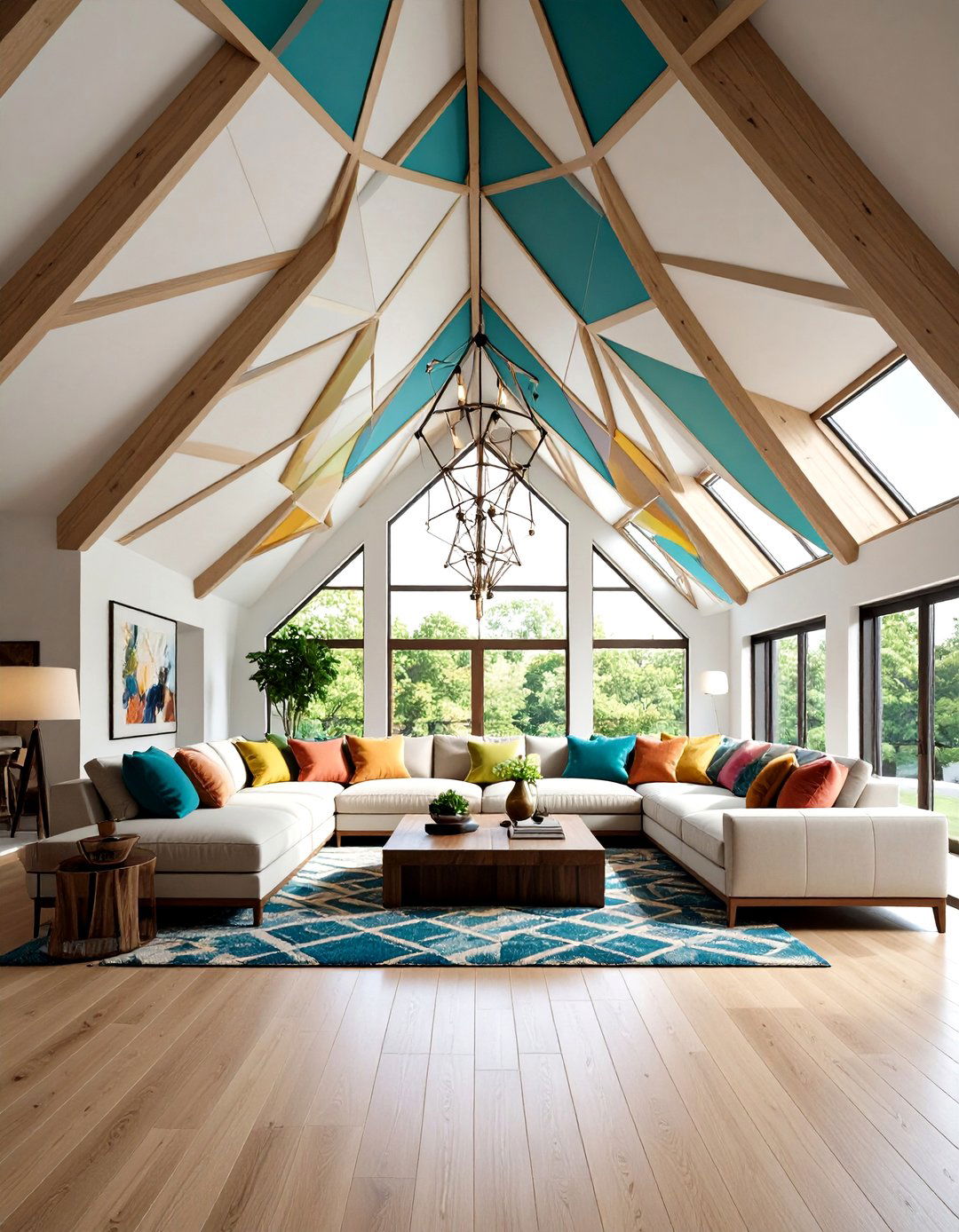
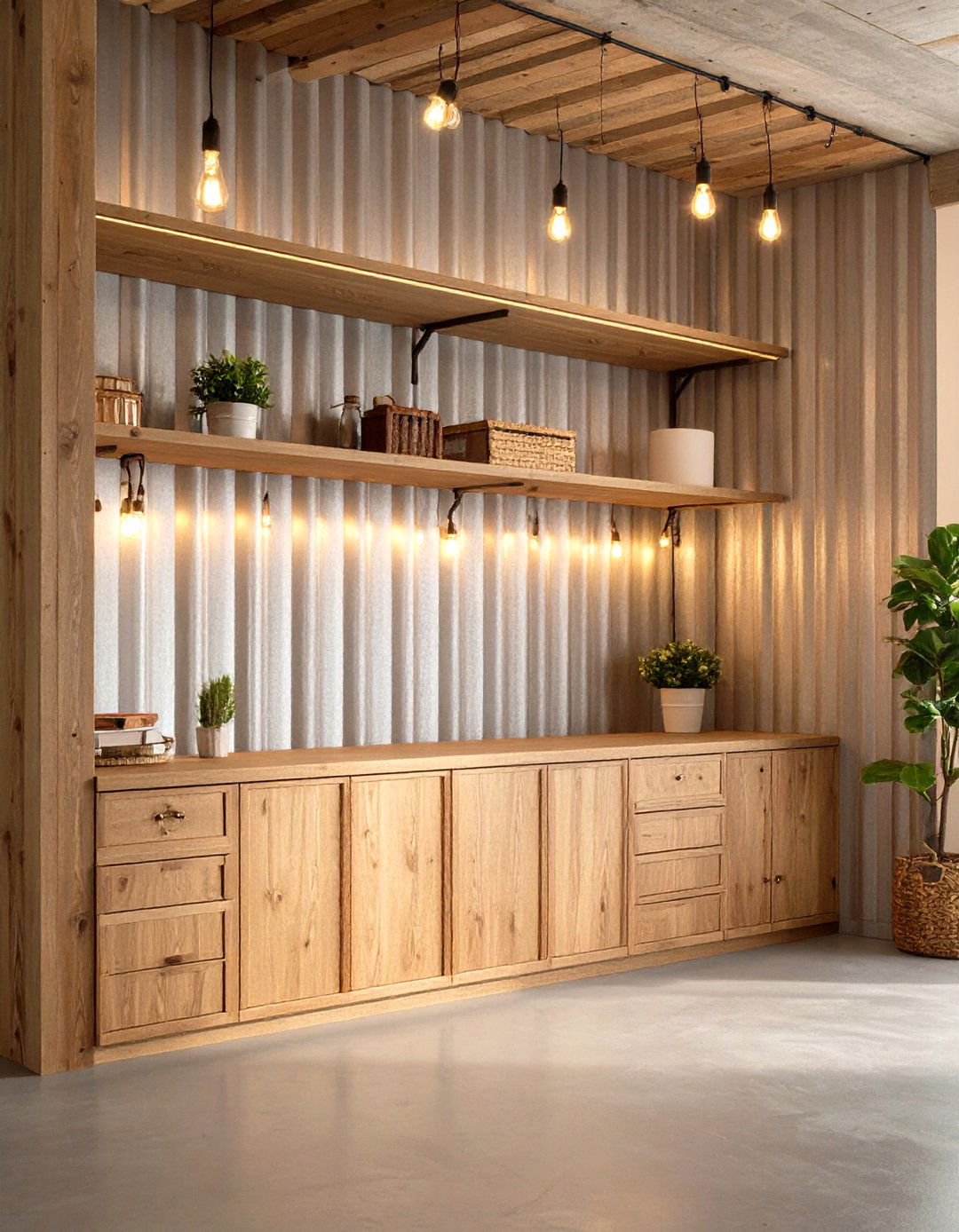
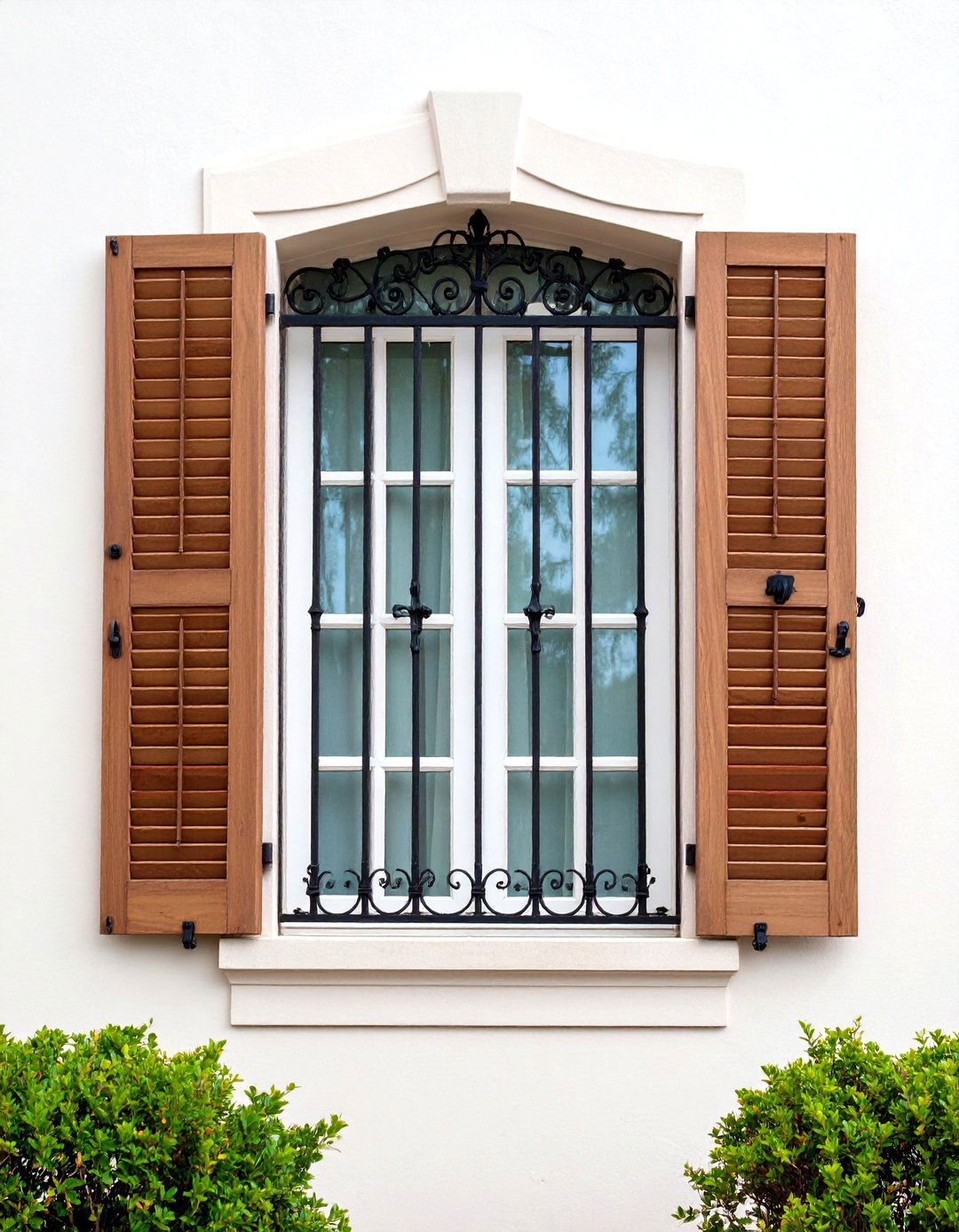
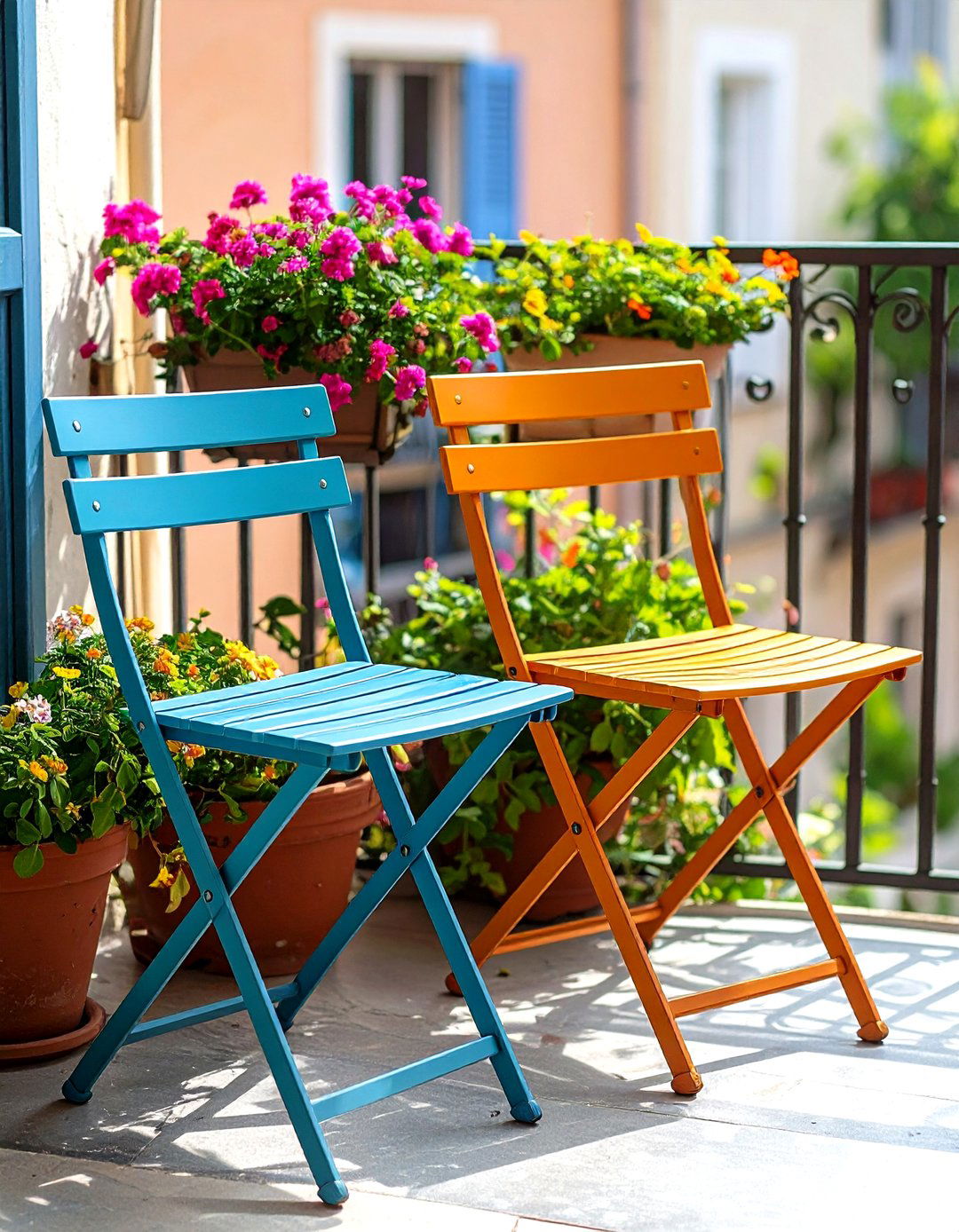
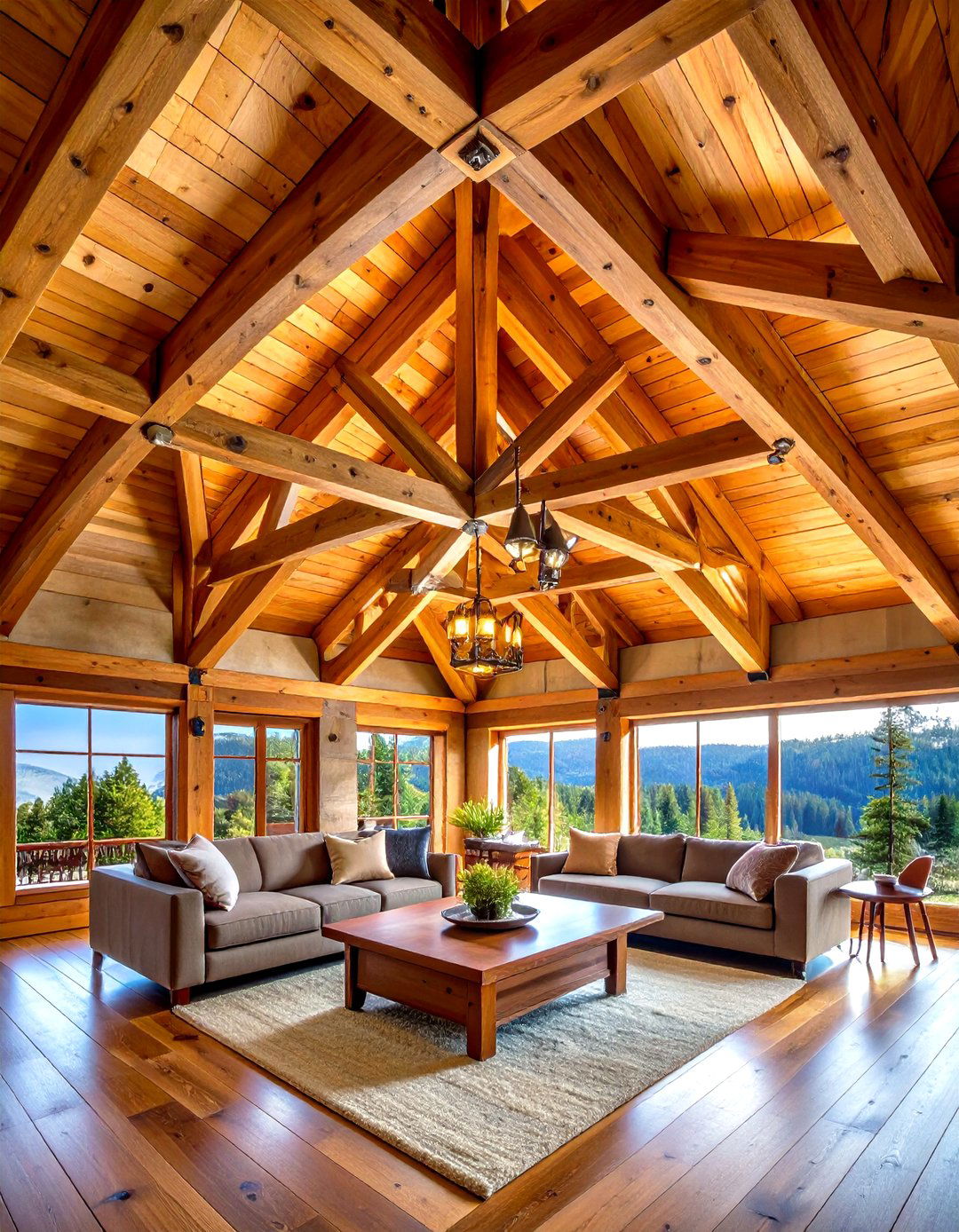
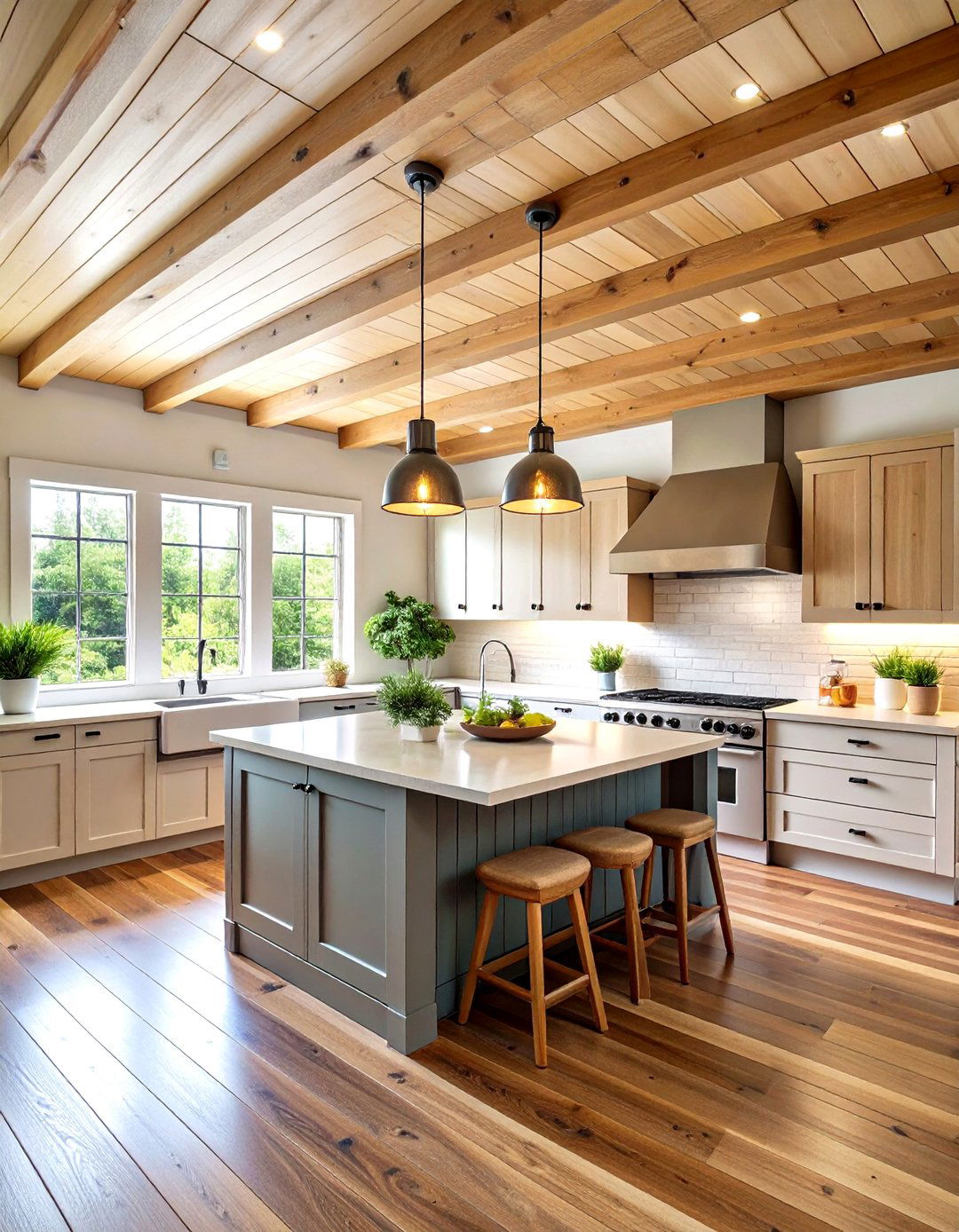
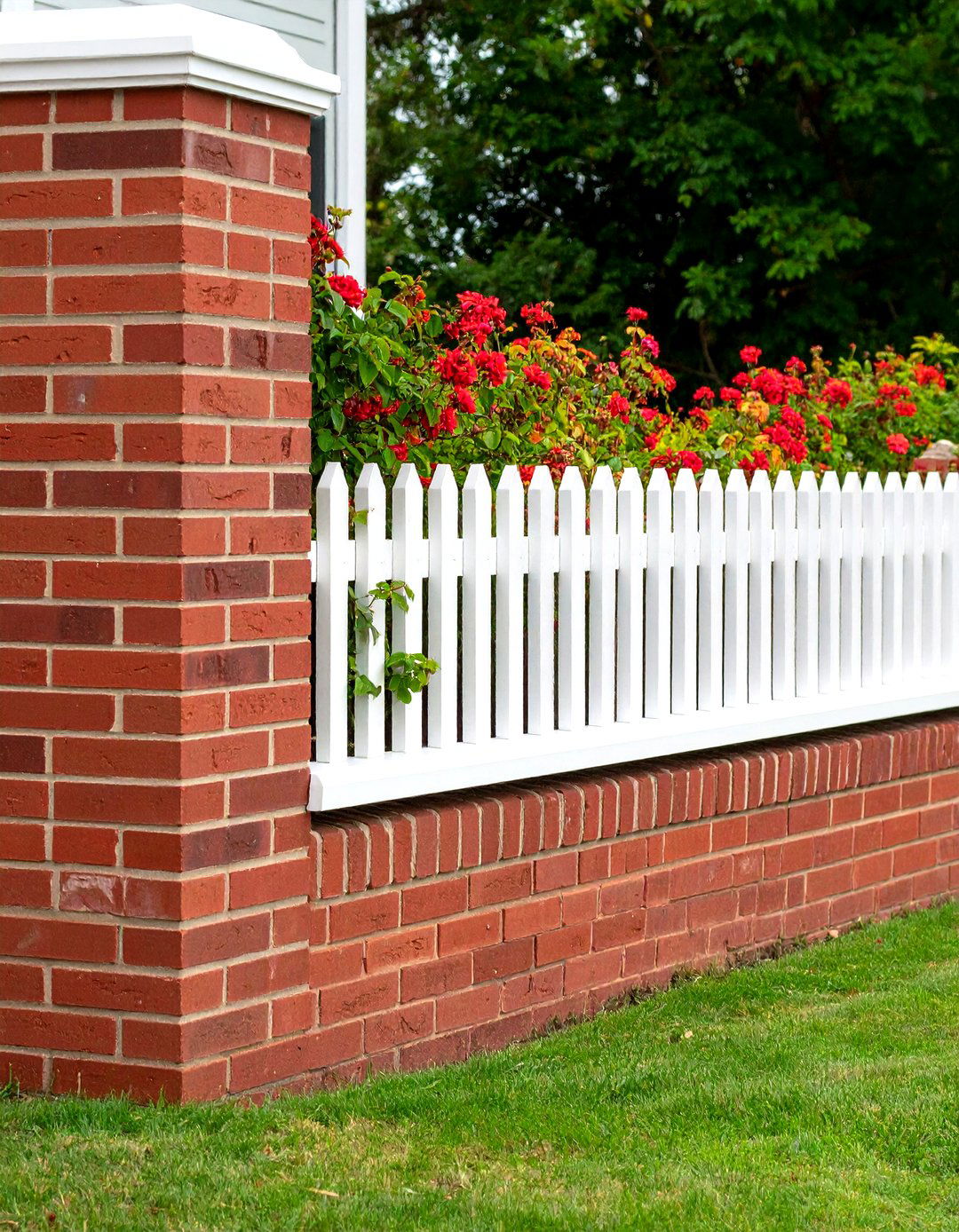
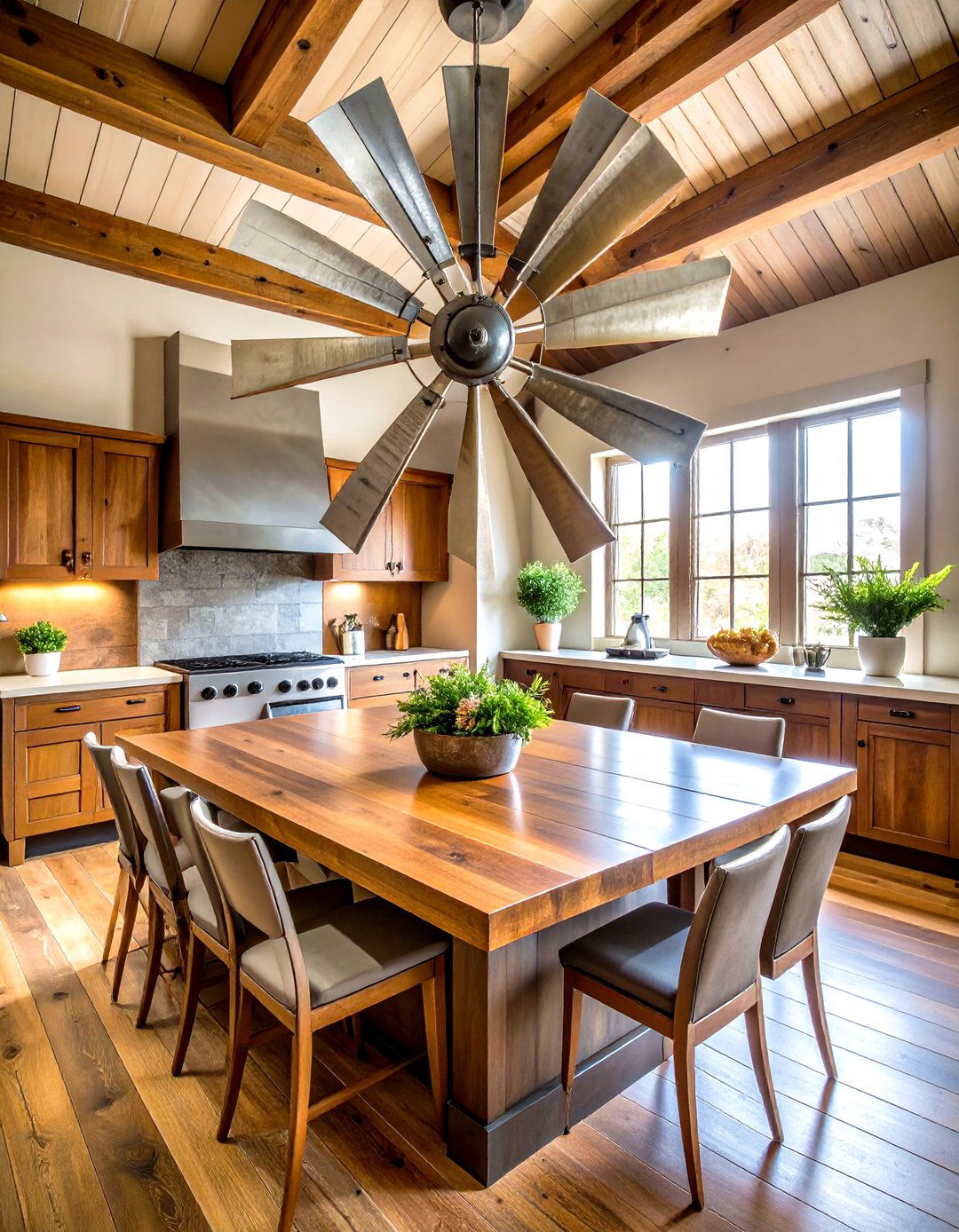
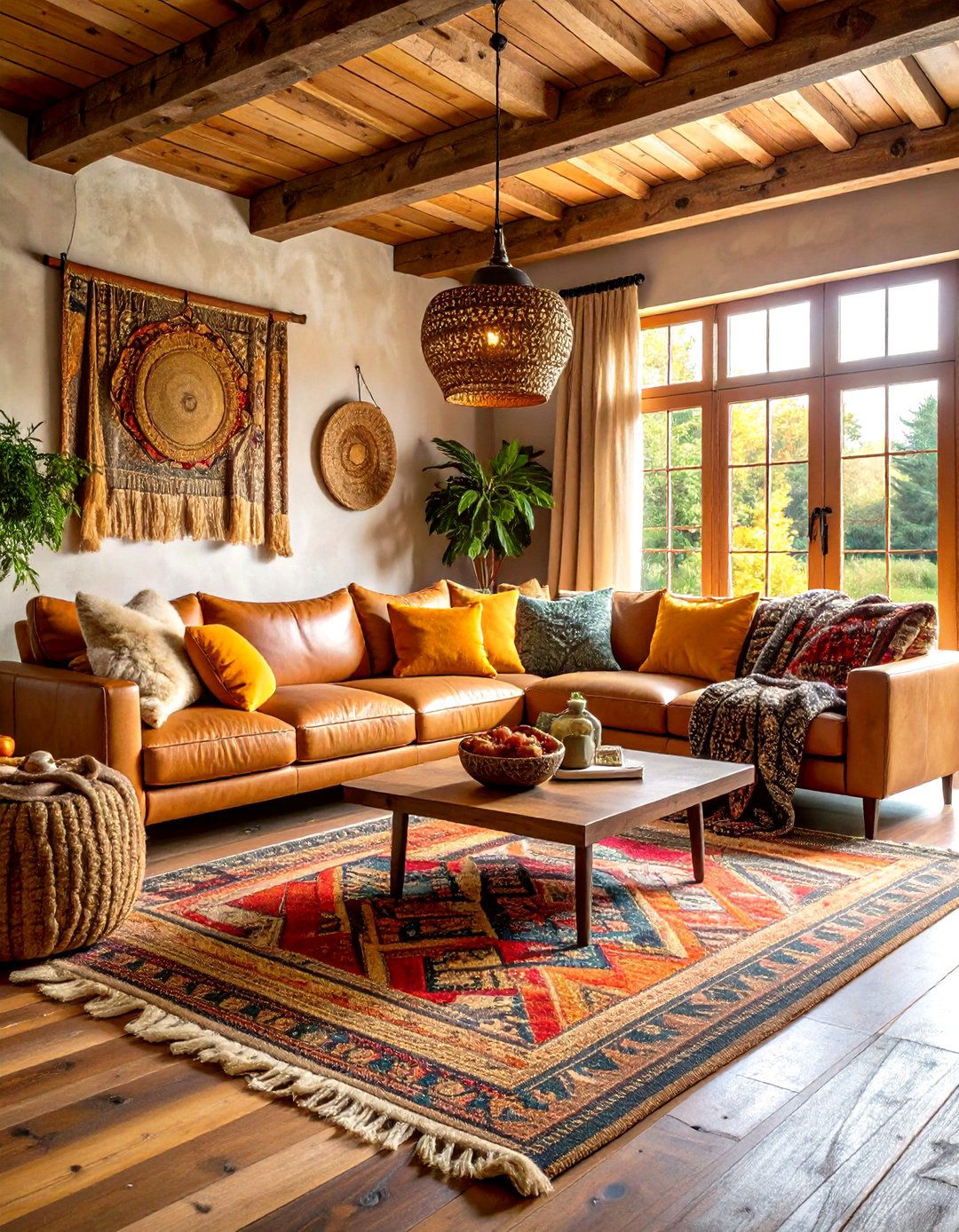
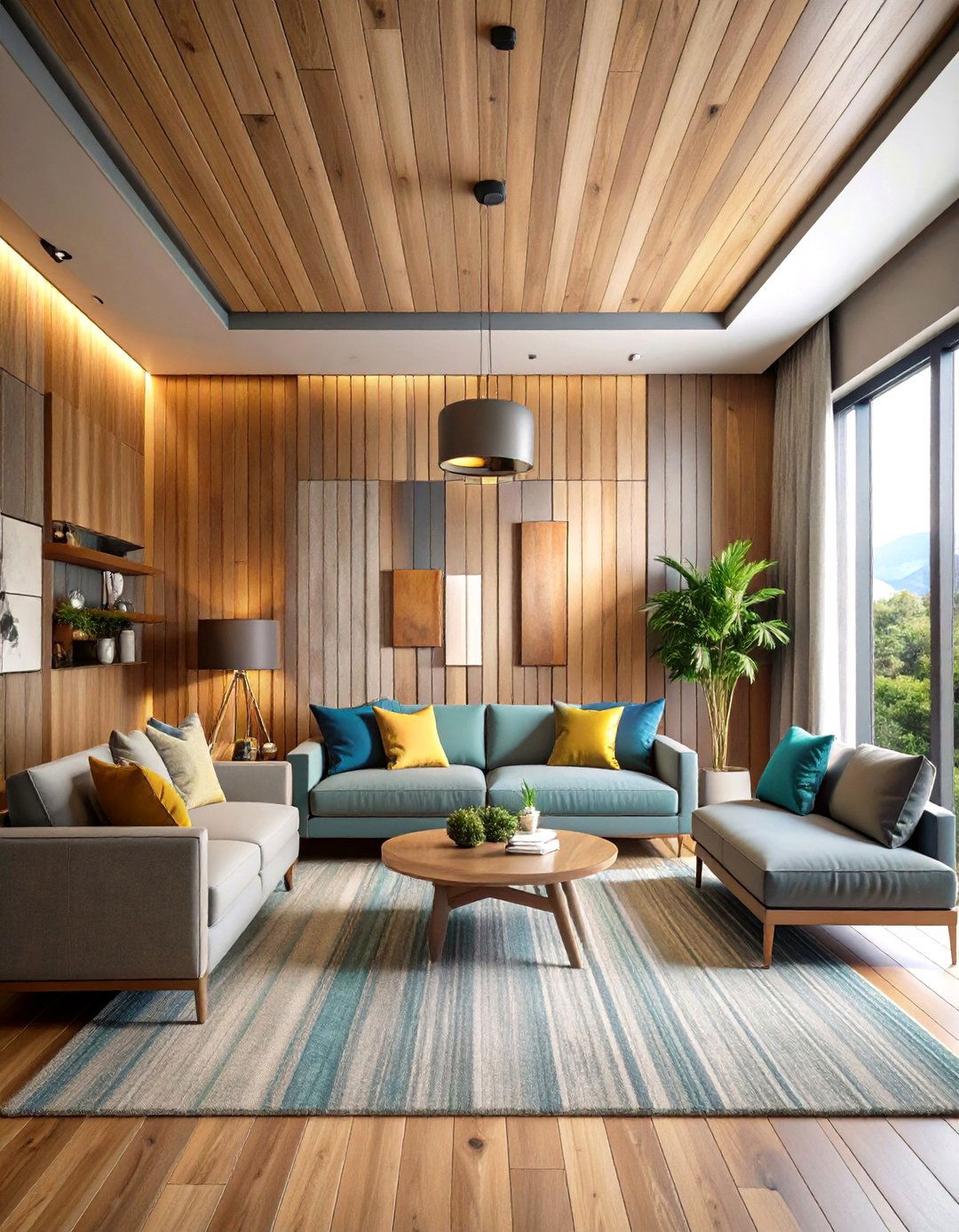
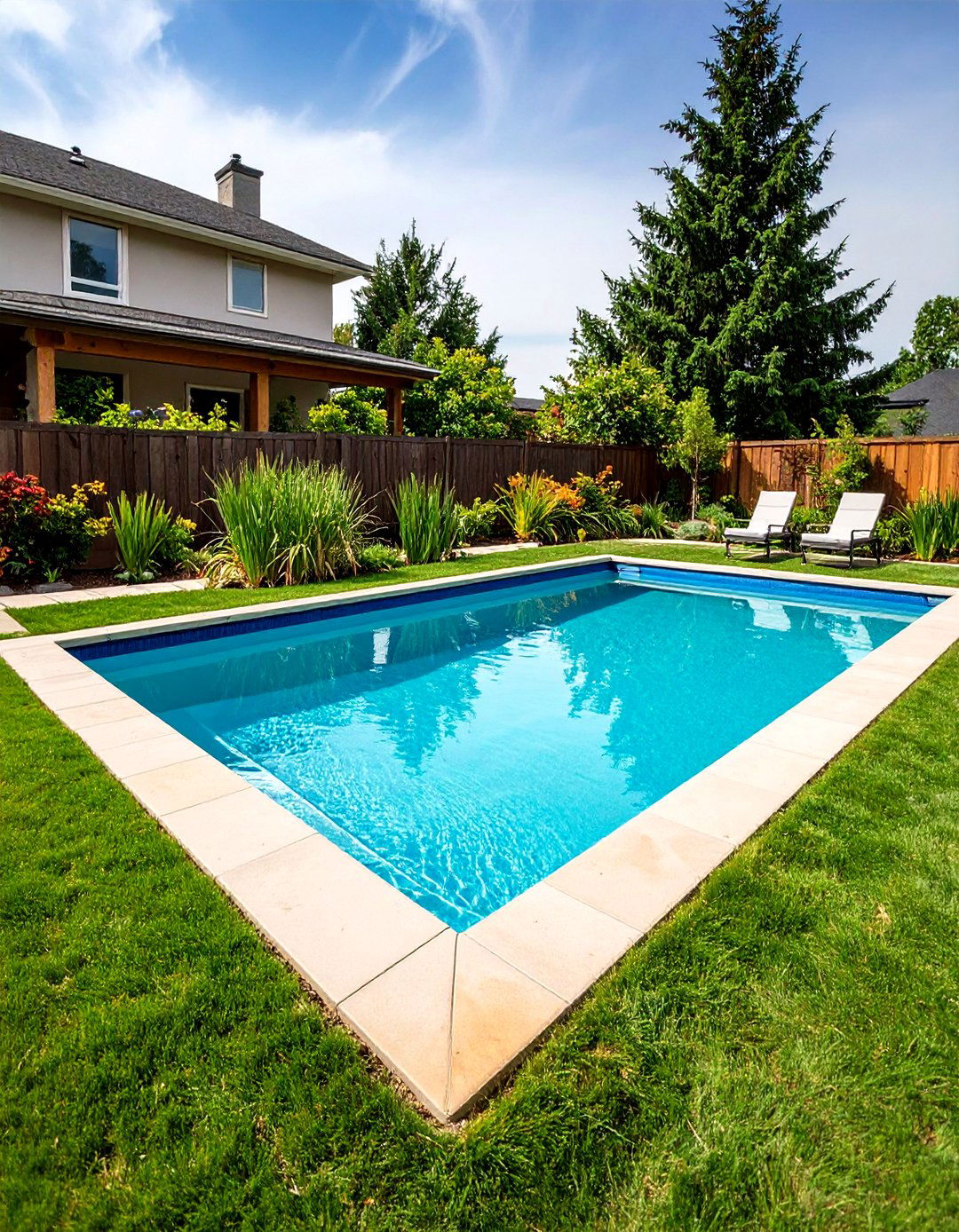
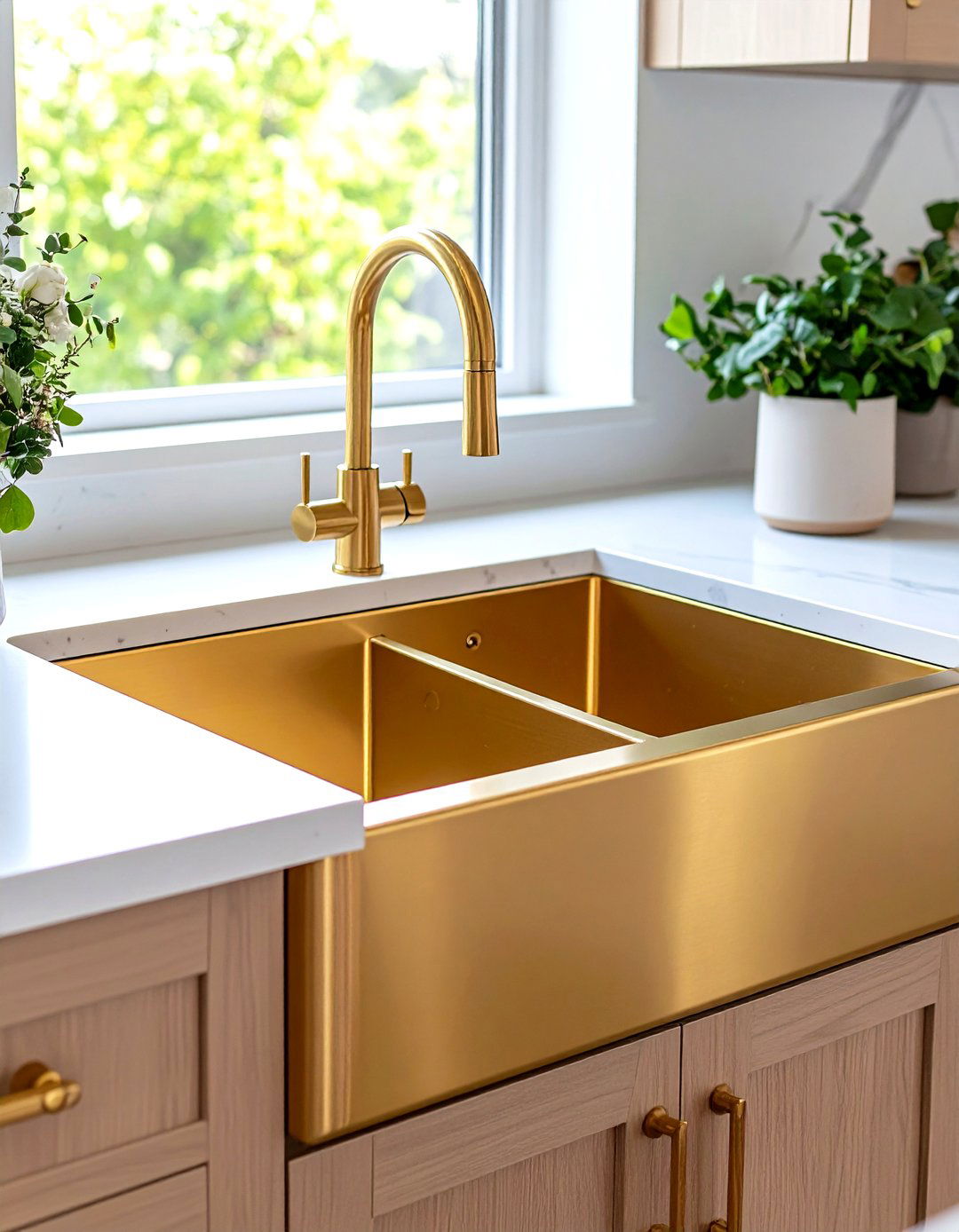

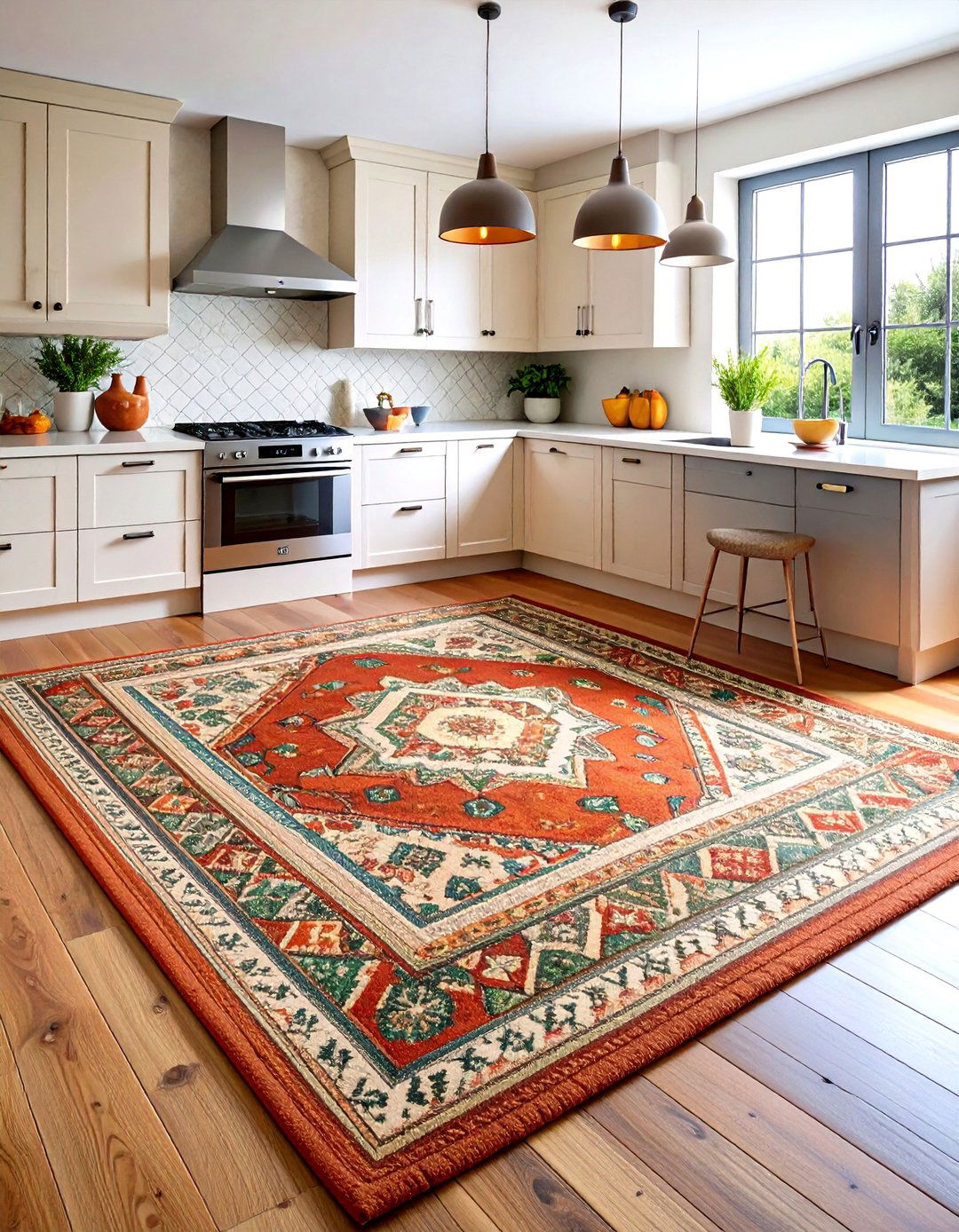

Leave a Reply